Elite Human Capital
Executive search. recruitment. talent advisory. career coaching. outplacement., case studies in the recruitment process – an assessment method for gathering data on a candidate.

Recently I started recruiting for a management consulting company who uses client case studies as part of their selection process. For them, it has proven to be an effective way of gathering information on a candidate to assess suitability.
To better understand the use of case studies in the recruitment process, my assistant Laura and I did research into the topic, this blog post is to share that information with you.
An overview of case studies in the recruitment process
Case studies are used as a method of competency measuring. Competency methods can focus on technical abilities, social and behavioural skills, or a combination of the two.
Case studies are most popular in management consulting (though they are used in some other industries) since they are able to mimic the kinds of tasks that would be required in the job.
They are done face-to-face during a specified time slot or given to the candidate to complete in their own time.
See Hiring by Competency Models, Patty Grigoryev (2006)
University of Sydney, Case study interviews https://sydney.edu.au/careers/students/applying-for-jobs/interview-tips/case-study-interviews.html
Research on case study efficacy
The premise behind administering a case study as an assessment method is that it offers a level playing field, to some degree, by allowing shortlisted candidates to demonstrate their technical abilities and personal qualities irrespective of past experience and qualification(s).
Case studies enable interviewers to see the strengths and weaknesses of candidates in action, including:
- Engaging in logical and analytical reasoning.
- Thinking creatively and generating innovative solutions.
- Problem-solving.
- Working under time pressure.
- Effective communication skills, including presenting in front of one or several interviewers and using a whiteboard to express concepts.
Case studies are detailed in their nature, add cost to the overall recruitment process (because they require time and resources to administer) and are often one of the final stages in the recruitment process.
Reducing the risk of a bad hire
It is well-established that the costs of a bad hire for a business are huge, especially in leadership roles where it can affect the performance of the whole team.
The hard costs of a bad hire are estimated to range between 50% and 200% of the first-year salary. In management consulting, a bad hire cannot only affect the internal team – a poor client experience can have significant impacts from a brand and billing perspective.
Finding ways to reduce the number of bad hires isn’t easy, case studies have been developed to provide additional data points to make a more informed hiring decision. Using competency modelling methods such as case studies, it has been shown to increase success in hiring decisions, with the most significant improvement stemming from a better culture fit.
Talent Management 360, Using case studies to recruit talent https://talentmanagement360.com/using-case-studies-to-recruit-talent/
Case studies and management consulting companies
Big 4 accounting firms and strategy consulting houses like McKinsey and Bain consistently use case studies in their recruitment process, for example:
PWC appears to only use case studies in relation to taxation and when hiring recent graduates. They are described as “provide students with realistic fact situations in which a number of tax problems and opportunities can be identified”. They acknowledge that law students and business students may choose to approach them differently and give some background regarding the issues and deliverables expected, such as that students are expected to “incorporate a certain amount of tax planning into their solutions”.
https://www.pwc.com/us/en/careers/university-relations/tax-case-studies.html
By contrast, Deloitte’s approach is broader. The case interview is designed to assess problem-solving and analytical skills, as well as logic and strategy. However, it is also designed to give candidates an insight into their prospective role, since the cases align with real projects. They clearly step out a five-step approach that candidates should use to address the case interview and give a list of helpful tips that they recommend will help interviewees get the most out of the experience. There is also an interactive case interview practice website ( http://caseinterviewprep.deloitte.com/ ) designed to assist.
https://www2.deloitte.com/us/en/pages/careers/articles/join-deloitte-careers-case-interview-tips.html
McKinsey & Company who are notorious for gruelling recruitment methods, with some prospective employee’s having up to 20 interviews before receiving an offer, including a compulsory case interview.
McKinsey offer four example case interviews, which can all be found at this link:
https://www.mckinsey.com/careers/interviewing
Bain states that any candidate applying for a consulting role should expect a case interview, and those cases will be based on Bain’s client work. They provide two examples, as well as a mock interview for candidates to watch:
https://www.bain.com/careers/interview-prep/case-interview/
Capital One
Capital One also has a detailed case study guide which demonstrates what they will assess (problem solving and analytical skills) as well as providing examples:
https://jobs.capitalone.co.uk/business-analyst-case-study-guide
Time allotted
The PWC case studies are to be done in the student’s own time, but there is a general guideline offered: “The time required of the student to complete the case requirements will vary greatly, depending upon the level of tax knowledge of the individual student, their software skills, and the number and type of issues in each case. As a very general guideline, each case study, with all issues included, should require not less than 10 hours of issue formation, research, and analysis by a graduate tax student, before the final deliverable(s) are developed.”
Deloitte’s case interview preparation page states that each case is 15-20 minutes long but does not give any set time limits and there is no suggestion that responses are timed.
See PWC Case Studies in Taxation https://www.pwc.com/us/en/careers/university_relations/documents/Case-Studies-in-Taxation-2018.pdf
Measuring the responses
PWC’s case studies are designed to test both technical skills (tax knowledge, Excel ability) and broader skills such as problem solving and creativity. It is stated that the ‘deliverables’ can be in many forms including “a letter to the client identified in the case study, a memo to the client file, or preparing a ruling request for the IRS. Some case study users require oral presentations. These may take the form of a straight presentation or role-play in the setting of a client meeting, resolution of an audit, or representation of a client in a court.” Actually measuring these is not expressly dealt with, but the document does provide a set of solutions to each case study for comparison, akin to a marking key.
By comparison Deloitte is focused less on finding the ‘right answer’ and emphasises that candidates will do well by clearly demonstrating a logical thought process. Having a clear structure and acknowledging any assumptions are listed as recommendations. Possible answers are given in the example attached and they focus on having both justifications and implications for each point. It’s all about the ‘how’ rather than the ‘what’. For numerical/technical questions however, there is a clear right and wrong.
Other methods of work sample testing
There are alternative methods for collecting data points on a candidate, these include: written questionnaires, take home or in office real life job tasks, online assessment tools and group assessment centres.
One hiring manager I was recruiting for would take a full two hours to conduct an interview with a candidate. In the first hour he would cover off behavioural and company ‘fit’ questions, in the second hour he would launch into a long list of technical questions, including real case study examples from working at his company.
This thorough approach made the hiring manager more confident in his decision to hire the individual (or not hire if the candidate wasn’t strong enough).
Here are some other quality articles on evidence based interviewing and testing.
- The Case for Evidence Based Interviewing: Part 1 and Part 2
- Assessing Soft Skills
When I’m engaged to conduct a recruitment process for a client I recommend gathering as many data points on the candidate as possible – including a type of work sample, if possible.
I’m always looking for ways to help organisations recruit better. Leveraging years of experience in corporate recruiting I can assist with finding the bottlenecks and weak points in your hiring process and improving hiring outcomes.
Find out more about my services here: https://elite-human-capital.com/consulting-services/
To talk with me about how I can help, make contact today.

Share this:
Leave a comment cancel reply.
- Already have a WordPress.com account? Log in now.
- Subscribe Subscribed
- Copy shortlink
- Report this content
- View post in Reader
- Manage subscriptions
- Collapse this bar
Skills-based success: 10 recruiting case studies

The working world has been turned on its head with the pandemic, the Great Reshuffle, and the resulting skills shortage. Companies are searching for a powerful, sustainable way to recruit and retain talent, and 81% of them are now opting for skills-based hiring practices.
Skills-based recruitment practices are for everyone. Don’t believe us? We've put together 10 recruiting case studies that demonstrate how different individuals, industries, and regions have successfully implemented skills-based hiring.
Table of contents
What's the purpose of a recruiting case study, 3 personal recruiting case studies, 3 recruiting case studies by industry, 4 recruiting case studies by region, looking for more recruiting case studies, the state of skills-based hiring 2024.
Read TestGorilla's annual report to discover why over 81% of companies are choosing to adopt skills-based hiring methods in 2024.

In recruitment, case studies are helpful tools for employers seeking to build, develop, or optimize their recruitment processes. They can be great sources of information and inspiration. By understanding the successes and failures others have had with their hiring processes, hiring managers can take any relevant learnings without having to make the same mistakes that others have.
To make these recruiting case studies relevant for as many people as possible, we've divided them into personal case studies, case studies by industry, and case studies by region. Let's dive in.
Let’s first look at the personal stories of some stellar individuals who were recruited into their ideal industries using skills-based practices. These people didn’t have traditional backgrounds, but because of their unique skills, they got into amazing roles. All that was needed was a chance to prove those skills during recruitment.
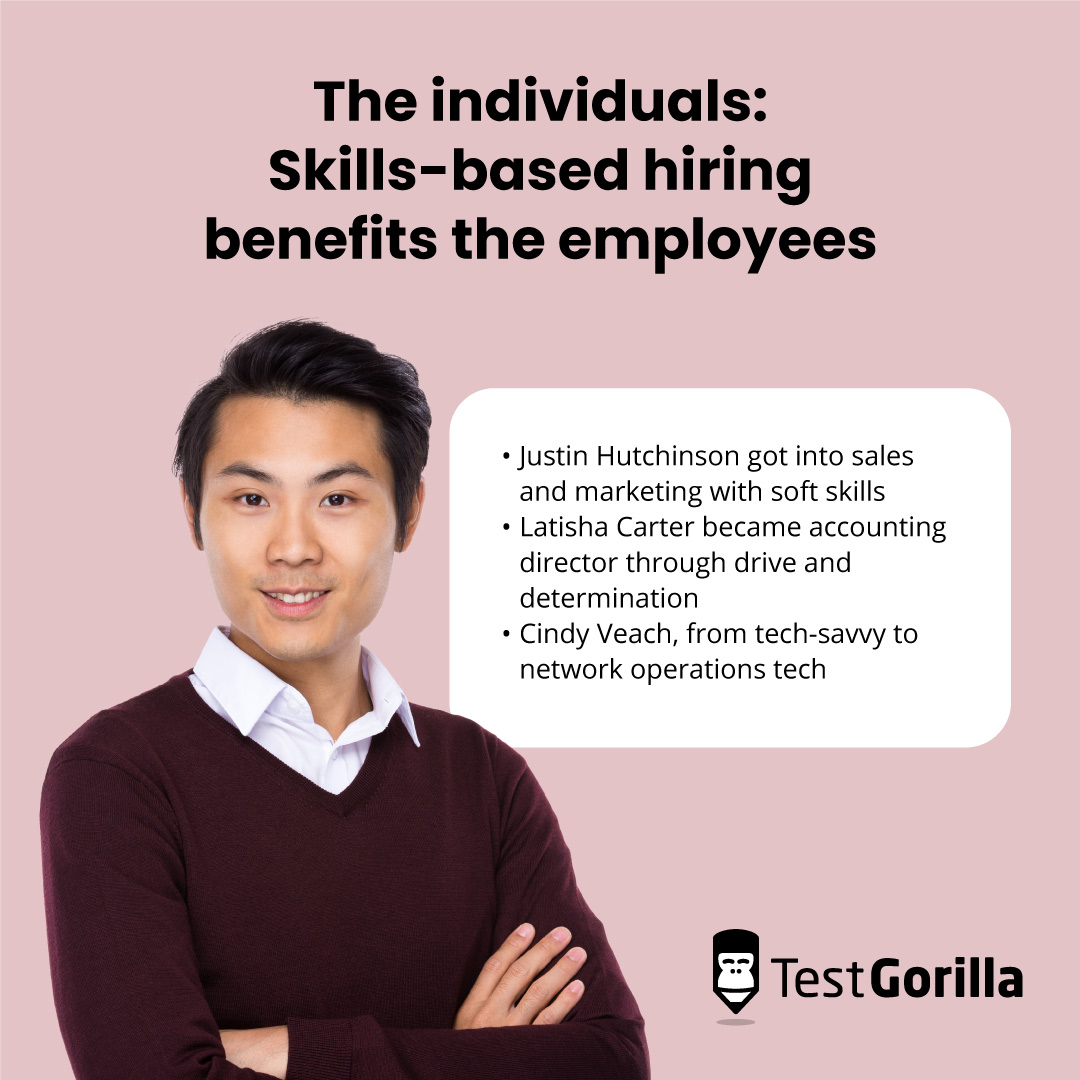
1. Justin Hutchinson
Justin Hutchinson wanted a future in football, but he was faced with a hard choice at age 14: Focus on his career prospects or take care of his father with cancer.
Justin, of course, chose his father and has never regretted that choice, but it did mean giving up the chance of achieving his dream job.
After his father’s passing, Justin attended a community college to fulfill his father’s wish for him to get a degree. To pay rent and living expenses, Justin got a job at a smoothie franchise.
His aim was to simply support his cost of living by making fast food – but it turns out Justin’s real skill was people and communication.
Justin would study the cars that drove up, memorize their orders, and have them ready so he could spend time talking and getting to know the customers instead of making drinks.
One of Justin’s customers was a chief executive of a marketing company and was so impressed with his people skills, he offered Justin an internship.
It wasn’t long before Justin used his soft skills to turn that internship into a full-time position. He dropped out of college, poured his heart and soul into the role, and attained the role of Director of Business Development.
Justin attributes his success to his best skills:
Workplace empathy
Strategic and critical thinking
Sales management
Justin didn’t have a typical marketing background – his experience was a partial college education with no degree, on-the-job experience (and not a traditionally “relevant” job), and his internship.
Not everyone can find the perfect marketer in a charismatic smoothie server, but online skills testing holds the same principles: Look at abilities first and ask questions later.
Sales and marketing are industries that are uniquely dependent on soft skills, which makes skills-based hiring an obvious choice for recruiting. For information on how it helps with the tricky subject of ramp time, read our article on skills-based hiring and ramp time.
2. Latisha Carter
Latisha Carter had a dream of excelling in corporate America, but she never got the opportunity to attend college.
At age 17, Latisha became a single mother. This put her dreams of college on hiatus for the foreseeable future.
Three years later, after having another child, Latisha got a job as a nursing assistant. But she still couldn’t shake her desire to make it in the corporate world.
She secured a call center job with NCR, a software company, driven by their offer of extensive employee training.
Offering extensive upskilling and reskilling is one of the best things you can put on the table for potential candidates. A study by Lorman showed that 59% of Millennials believe that development opportunities are extremely important when deciding whether to apply for a position.
Latisha used her experience at NCR to get a role in customer service at the software company Sage.
With determination and hard work, she continued to work her way up for 20 years until she became a director at Xero, an accounting technology company.
Latisha is now proudly a director in corporate America with no college degree. Her company is reaping the benefits of her presence and skills.
In the second half of 2021, Xero’s approach to skills-based hiring and its emphasis on diversity pushed a 7% increase in racial and ethnic diversity.
Jana Galbraith, the executive general manager for people experience partnering for Xero, says: “ [H]istorically, hiring based on degree exclusively has perpetuated discrimination .”
This boost is great news for Xero because the benefits of diversity are broad and include increased productivity, innovation, and financial performance.
Latisha’s struggle to succeed is unfortunately common for working mothers. To learn more about this, read our article on the motherhood penalty .
3. Cindy Veach
Cindy Veach didn’t have a traditional background. She had all the tech know-how, but she only had experience involving massage therapy and social services.
But she had the skills and she knew it. Cindy says it was a happenstance that she stumbled upon her perfect role; she just wanted a role where she could use her best talents.
“I was looking for jobs I had the right skills for, organizational skills in particular,” said Cindy.
She happened upon a tech administration apprenticeship program at IBM. Before then, she saw her tech skills as just a hobby and never imagined herself in the tech industry – but she applied and was accepted.
Cindy had a steep learning curve ahead of her. She possessed the base tech skills but needed the training to reach the right level.
She attributes much of her success to the flexibility of her mentors. They continually told her that if a path “didn’t feel right,” she was welcome to experiment and try something new.
At the end of the apprenticeship, she applied for a network operations technician role and was hired. She took a position with flexible work options so she could still care for her two children comfortably.
Skills-based hiring made this outcome possible. Cindy’s communication skills, digital expertise, and problem-solving abilities helped her secure her role, and the focus on continuous improvement is helping her develop it .
She says that the combination of her appetite for learning and her employer’s support for her success is the perfect duo for creating limitless growth.
We’ve heard plenty of people say “skills-based hiring doesn’t work in my industry.” But that’s just yet another myth we’ve debunked . Let’s take a look at a handful of case studies about how companies within certain industries have succeeded with skills-based recruitment initiatives.
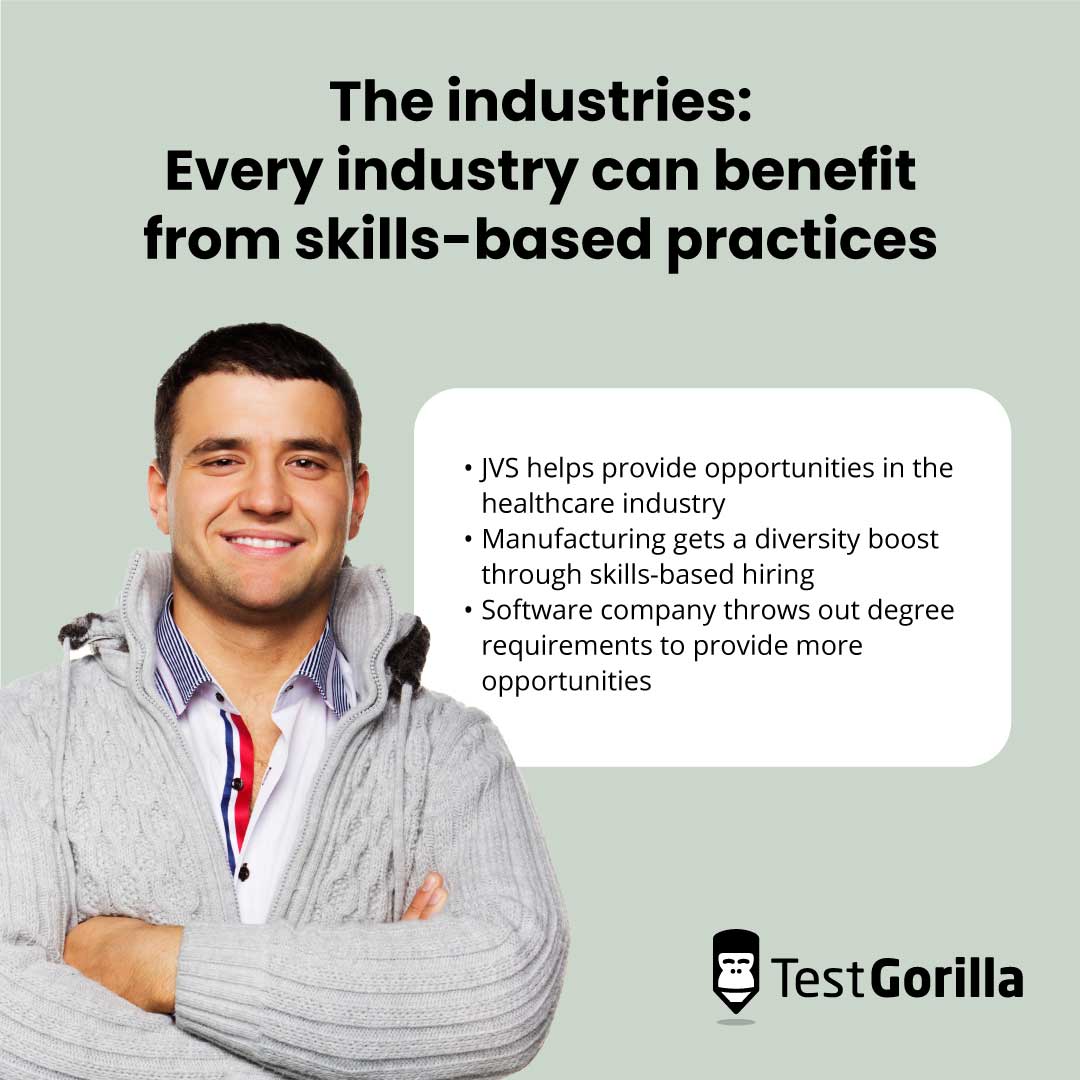
4. Healthcare
Healthcare administration is an industry that’s notoriously difficult to get into. Between receiving a bachelor’s degree and completing a master’s program, it can take six to eight years of rigorous commitment.
However, more opportunities are arising that allow equally qualified candidates to get in without obtaining specific educational requirements.
Sam Saucedo-Hernandez had a tumultuous life, but she only ever wanted a solid career. As a child of parents who emigrated from Mexico, she wanted to be the first generation in her family to attain a degree.
Sam watched her parents struggle with low-wage jobs and promised herself she would do better for herself.
Her first attempt was at law school where she spent several years studying hard. Sam was ecstatic to get her degree and begin a career in law.
But two weeks after she got her associate of science degree, the school got shut down for fraud, leaving Sam jobless and $60,000 in debt.
Sam faced many challenges, but the turning point in her story was the day she received a letter promoting a no-cost medical administrative assistant job training program from JVS.
JVS is a program that helps people build skills and find solid career connections – particularly in the healthcare industry.[1]
JVS has seen amazing success with over 500 employer partners and an emphasis on promoting diversity: 88% of their participants are Black, Hispanic, Asian, or a wide range of other ethnicities.
Sam applied for the program and was accepted. She secured a position as a medical administrative assistant, but her training has led her to her current role in the audiology department.
Though she’s fortunate for her position, Sam says she’s still looking forward, wondering where her skills can take her from here.
Programs like JVS are working tirelessly to make more stories like this possible. With a focus on skills over experience, they bring in valuable candidates to industries that may otherwise be restricted to them.
5. Manufacturing
Steelcase, a furniture manufacturing company, wanted to build a fairer place for employment opportunities and encourage better representation for employees of color. So they adopted skills-based hiring practices.
They’re far from the only ones. According to TestGorilla’s State of Skills-Based Hiring report, 85% of businesses in 2023 had the goal to increase diversity.
And companies are succeeding at this by implementing skills-based hiring: 91% of organizations saw an increase in diversity due to skills-based hiring.
Steelcase realized that if they truly wanted to boost their DE&I initiatives , traditional hiring methods wouldn’t do.
They decided their hiring processes needed to be revamped for the better, so they adopted some new practices:
Prioritizing skills over resume and pedigree
Removing experience requirements wherever possible
Favoring continuous improvement over perfection
Revamping job descriptions to reduce biased language
Prioritizing diversity among equally qualified candidates
Steelcase decided that practices like these would enable them to reach diverse talent organically, and it worked. Since the program started, Steelcase’s new hires are 55% women and 30% racial or ethnic minorities.
Steelcase’s initiatives are amazing, so we encourage similar active moves to boost diversity. To read more about this topic, read our blog on why being intentional about workplace diversity is non-negotiable .
6. Software
ADP, an HR management software company, adopted a recruiting strategy to focus on skills , rely less on credentials, and make an effort to provide opportunities for candidates with nontraditional backgrounds.
This strategy included training talent acquisition professionals on best practices, hiring specific diversity recruiters, removing degree requirements from high-volume recruiting roles, and leveraging better training and mentorship for new hires.
What were the results? ADP saw great success in one year:
An increase in the number of candidates with no college degree
An increase in Black representation in the candidate pool
An increase in Hispanic representation in the candidate pool
This program was heavily inspired and backed by Maria Black, the chief executive of ADP, and her strong belief in corporate social responsibility.
She has a strong passion for supporting working women, veterans, and other underrepresented talents.[2]
Maria is an excellent example of the power of leading from the top. When your company’s leadership supports a great cause, it benefits both employees and company alike and builds a better organizational culture .
Next, let’s take a look at some case studies about the regions and countries that are taking on skills-based recruitment practices. For more on this subject, check out our post on skills-based hiring around the world .
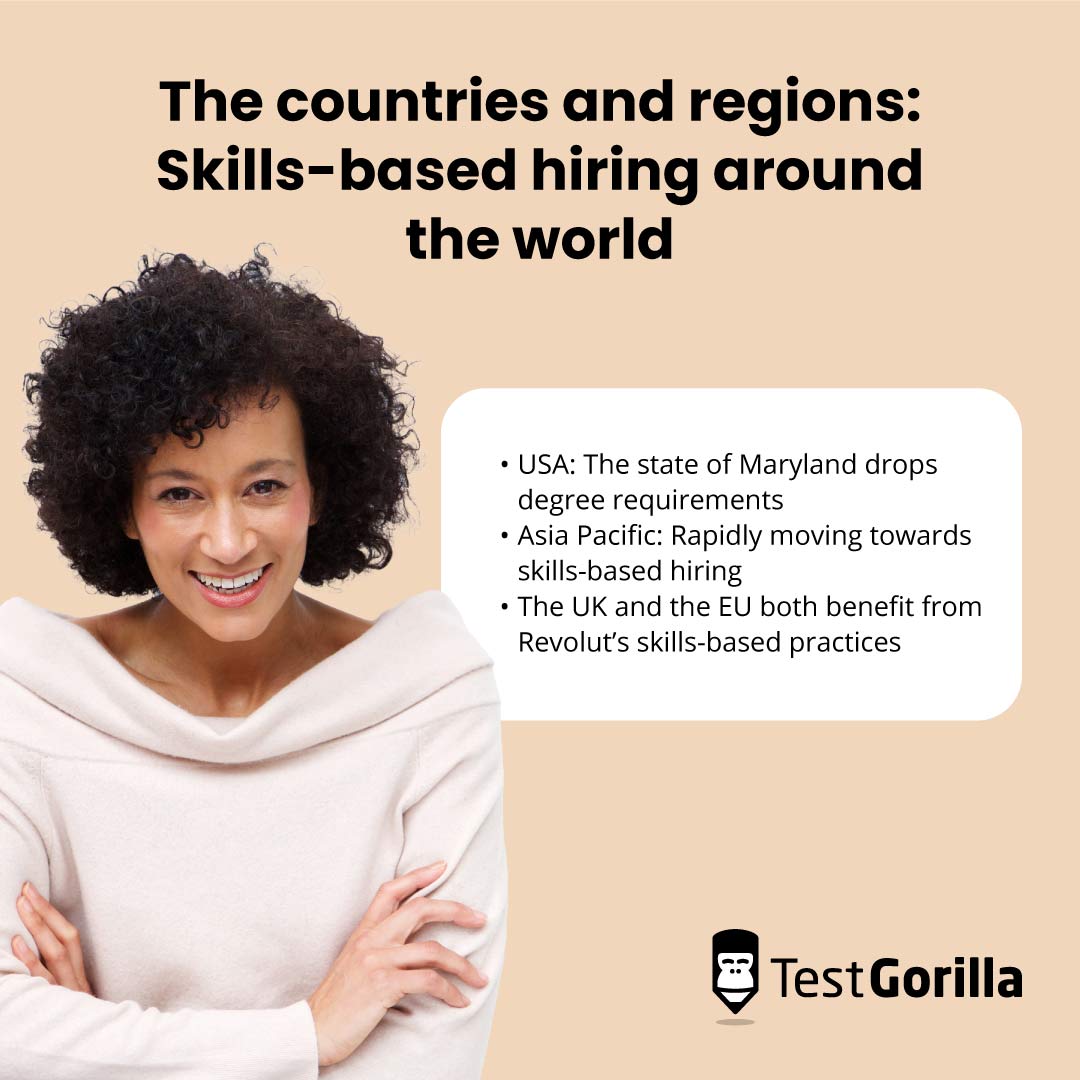
7. Maryland, USA
In 2022, the state of Maryland dropped four-year degree requirements for thousands of jobs in the government sector.
The aim of this initiative was to draw attention to the value of alternative credentials and experience. State officials want to give people a better shot at securing a stable, fulfilling job.
Governor Larry Hogan was quoted as saying:
“[W]e are ensuring qualified, non-degree candidates are regularly being considered for these career-changing opportunities.”[3]
Over 38,000 people work for the state of Maryland and it’s estimated that more than half of those jobs can be performed by people whose alternative skill routes can easily substitute for a college education.
These alternative routes include:
Life experience
Non-relevant job experience
Hobbies and volunteer work
Alternative training
Community college education
Maryland estimates that about 47% of its working population are STARs (skilled through alternative routes). That’s 2.8 million workers, and these people need solid opportunities – opportunities that they can access through skills-based hiring.
To learn more about how unnecessary degree requirements are holding top talent back, read our blog on degree inflation .
8. Indiana, USA
Indiana’s tech leaders are struggling to attract and retain great talent. They’re facing a major skill shortage and they can’t solve it with the “usual” hiring methods.
Traditional recruiting methods exclude over 95% of Indiana’s workforce.
Indiana has a workforce of 3,332,239 people, but consider this:
A four-year degree requirement removes 75%
Biases can eliminate up to 30% of the pool
Requiring specific past experience removes 93% of the talent pool
With all of that in mind, a pool of more than three million candidates is reduced to just over 42,000.
Indiana’s Office of Technology (IOT) realized that skills-based hiring practices could fix this problem and solve their shortage.
They started by removing degree requirements from most job descriptions, then took the next step and started offering reskilling opportunities to workers from alternative industries, such as line cooks and truck drivers.
Tracy Barnes, IOT’s chief information officer, said that the results of the program have been positive and they’re “very pleased” so far. She also said that she’s equally excited to see the positive life impacts for the candidates involved.
9. Asia-Pacific
Skills-based hiring is quickly gaining traction in the Asia-Pacific area.
One study showed that 79% of businesses in the Asia-Pacific area look for skills when hiring versus the 21% that prioritize education and experience.[4]
The same study found that internal mobility is more important than ever and that companies want to prioritize gender equality and disability inclusion . These points can also be accomplished by adopting skills-based hiring.
Asia-Pacific is looking to skills-based practices to improve the future of their recruitment processes, but Singapore-based TruTrip is already reaping the benefits .
TruTrip is a business travel management company that needed help assessing candidate skills and hiring the best candidates, so they gave TestGorilla a try.
Here are a few ways that TestGorilla’s pre-employment skills testing helped TruTrip’s recruitment processes:
Gives them a way to objectively assess applicants’ skills and knowledge
Helps them eliminate bias from the hiring process
Enables them to consistently make better hiring decisions
Reduces their reliance on resume screening
Enhances teamwork and communication
Improves the employee experience of new hires
According to Hugh Batley, the founder of TruTrip, their new hires are a better fit. These employees become great contributors and have a better initial experience with the company.
TestGorilla also helps TruTrip save thousands of dollars by reducing the chances of a costly mis-hire.
This isn’t unusual. According to TestGorilla’s State of Skills-Based Hiring report, 92.5% of organizations using skills-based practices saw a reduction in mis-hires in 2022.
10. The UK and the EU
The UK and the EU have developed a strong focus on skills over the past few years.
Interest in skills-based hiring in the UK rose 63% from 2021 to 2022 . This drastic increase is due to employers wanting a wider talent pool and candidates prioritizing and valuing their alternative experience.
This move is helping job opportunities reach the 73.6% of people in the United Kingdom who don’t possess a four-year degree. [5]
As for the European Union, they developed the “Pact For Skills” program in 2020. This program was created to encourage and fund better upskilling and reskilling while also promoting greater diversity and gender equality.[6]
A good example from both areas is the British-Lithuanian bank, Revolut.
Revolut adopted skills-based hiring by using TestGorilla’s skills tests and, as a result, improved their time-to-hire by 40% .
Among many other benefits, Revolut found TestGorilla’s language tests life-saving. Assessing language proficiency is essential for a multinational company, but traditional methods are time-consuming and laborious.
TestGorilla’s language tests help Revolut to quickly and easily evaluate their candidates’ reading, writing, listening, and speaking skills. This helped them to nearly fully automate their screening process, improving time-to-hire greatly.
To read more case studies and success stories about skills-based hiring, check out our 10 stories that demonstrate the power of skills-based hiring or our collection of customer case studies .
Here are 3 top picks from our case studies:
Revolut improves time-to-hire by 40% using TestGorilla
Design Pickle uses TestGorilla to boost application completion rate by 25%
TestGorilla helps TruTrip to save money and improve employee experience
If you’d like to acquaint yourself with a solid skills-based hiring practice, browse our test library and review our skills tests.
“JVS 2022 Impact Report”. (2022). JVS . Retrieved March 6, 2023. https://impact2022.jvs.org/
“Maria Black, president and CEO”. (n.d). Business Roundtable. Retrieved March 6, 2023. https://www.businessroundtable.org/about-us/members/maria-black-president-and-ceo-adp
McGraw, Mark. (April 4, 2022). “Dropping Degree Requirements: Do Employers Still Care About Education?”. World at Work . Retrieved March 6, 2023. https://worldatwork.org/resources/publications/workspan-daily/dropping-degree-requirements-do-employers-still-care-about-education
“The Future of Talent”. (2021). LinkedIn . Retrieved March 6, 2023. https://business.linkedin.com/content/dam/me/business/en-us/talent-solutions/resources/pdfs/future-of-talent-whitepaper.pdf
“Overview of the education system”. (2022). Education GPS . Retrieved March 6, 2023. https://gpseducation.oecd.org/CountryProfile?primaryCountry=GBR&treshold=10&topic=EO
“Pact for Skills”. (November 10, 2020). European Commission . Retrieved March 6, 2023. https://ec.europa.eu/social/main.jsp?catId=1517&langId=en
Related posts

How to write a project manager job description

9 steps to effective competency mapping

IQ tests for employment are obsolete – here’s what to do instead
You've scrolled this far
Why not try TestGorilla for free, and see what happens when you put skills first.

Latest posts

The best advice on pre-employment testing, in your inbox.
No spam. Unsubscribe at any time.
Hire the best. No bias. No stress.
Our screening tests identify the best candidates and make your hiring decisions faster, easier, and bias-free.
Free resources

This checklist covers key features you should look for when choosing a skills testing platform

This resource will help you develop an onboarding checklist for new hires.

How to assess your candidates' attention to detail.

Learn how to get human resources certified through HRCI or SHRM.

Learn how you can improve the level of talent at your company.

Learn how CapitalT reduced hiring bias with online skills assessments.

Learn how to make the resume process more efficient and more effective.

Improve your hiring strategy with these 7 critical recruitment metrics.

Learn how Sukhi decreased time spent reviewing resumes by 83%!

Hire more efficiently with these hacks that 99% of recruiters aren't using.

Make a business case for diversity and inclusion initiatives with this data.

Why Do Employers Use Case Studies at Assessment Centers?
What to expect from a case study exercise, how to prepare for the case study exercise in 2024, how to approach a group exercise, how to approach a presentation, case study exercises at assessment centers (2024 guide).
Updated November 21, 2023

Should you be invited to be tested at an assessment center as part of an employer's recruitment process, one of the exercises you may face is a case study .
A case study exercise presents you with a scenario similar to what you would experience in the job you have applied for.
It will generally be accompanied by documents, emails or other forms of information.
You are asked to make business decisions based on the data you have been provided with, either alone or as part of a group of candidates.
A case study enables employers to assess your skill-base and likely performance in the job, providing them with a more rounded view of the type of employee you would be and the value you would bring to the company.
Commonly used in the finance, banking, legal and business management industries, the main advantage to employers of using case study exercises is to see candidates in action, demonstrating the skills they would be expected to use at work.
The skills assessed when participating in a case study exercise will vary depending on the employer, the industry and the job applied for, but may include:
- Analytical skills
- Strategic thinking
- Decision making
- Problem-solving
- Communication
- Stress tolerance
- The ability to assimilate information quickly and effectively
- Organisational skills
- Situational judgment
- Commercial awareness
- Time management
- Team working
- Knowledge pertinent to the industry or job, for example, marketing skills
Despite the skills that the employer is actively assessing, such as those mentioned above, success in a case study exercise relies on your ability to:
- Interpret and analyze the information provided
- Reach a decision
- Use commercial awareness
- Manage your time
- Communicate well
Practice Case Study Exercises with JobTestPrep
There are generally two types of case study exercise that you may face as part of a selection process:
- Subject-related case studies pertinent to the job you are applying for and the related industry
- General case studies that assess your overall aptitude and skills
The actual scenario of the case study exercise you face will vary, but examples of typical case studies include:
- Expanding a team or department
- Deciding whether an acquisition or merger is advisable
- Investigating whether to begin a new product line
- Re-organisation of management structure
- The creation of an advertising campaign
- Responding to negative publicity
- Choosing from three business proposals
- Developing a social media presence
Prepare for Case Study Exercises with JobTestPrep
For example: You are presented with the scenario of an IT company that went through an expensive re-brand one year ago. At that time, the company moved to bigger premises in a better area, and two new teams of developers were recruited to work with two new clients. The IT company has recently lost one of those clients and is facing increasing costs as the rent is raised for their premises. The company's directors have concluded that they must make one of the following changes: Make staff redundancies and offer the chance to several employees to change to part-time hours Move to less expensive premises in a less desirable area Combine a move to a flexible working business model where employees work part of the week from home and desk-share in the office along with a physical move to smaller premises in the same area where the IT company is currently based
You are asked to advise the directors on which change would provide the greatest benefit.
Here is another example:
A multi-national environmental testing organization buys out an oil-testing laboratory. A gap test is carried out on whether: The oil-testing lab should be brought in line with the rest of the organization concerning its processes, customer interface, and testing procedures The oil-testing lab should be closed down and its clients absorbed into the rest of the organization The oil-testing lab should be allowed to continue as it is, but new processes put in place between it and the larger organization
You are asked to consider the findings of the gap test and suggest the best course of action.
Just as you would prepare before a job interview, it is always in your best interests to prepare before facing a case study exercise at an assessment center.
Step 1 . Do the Research
There is a whole range of research you can look into to prepare yourself for the case study exercise:
- The job description and any other literature or documents forwarded to you
- The employer's website and social media
- Industry related news stories and developments
Any of the above should provide you with a better understanding of the job you have applied for, the industry you will work within, and the culture and values of the employer.
Step 2 . Use Practice Case Studies
Practicing case study exercises in the run-up to the assessment day is one of the best ways you can prepare for the real thing.
Unless the employer provides sample case studies on their website or as part of their recruitment pack, you will not know the exact format that the exercise will take; however, you can build familiarity with the overall process of a case study through practice.
You can find plenty of practice case study exercises online. Most of these come at a cost, but you may also be able to find free sample case studies too.
For case study resources at a cost, have a look at JobTestPrep .
For two free sample case study exercises, you might like to visit Bain & Company's website .
Scroll down to the Associate Consultant Case Library. Europa also offers an extensive and detailed sample case study .
Step 3 . Timed Practice
Once you have sourced one or more practice case studies, take the opportunity to practice to a time limit.
The case study may come with a time limit, or the employer may have already told you how long you will have to complete the real case study exercise on the day.
Alternatively, set your reasonable time limit.
Timed practice will improve your response time and explain exactly how much time you should allocate to each stage of the case study process.
Step 4 . Improve Your Reading Comprehension
One skill that is key to handle a case study exercise successfully is your reading comprehension, that is, your ability to understand written information, interpret it and describe it in your own words.
In the context of a case study, this skill will help you to assimilate the information provided to you quickly, analyze it and ultimately reach a decision.
In the run-up to your assessment day, put aside time to improve your reading comprehension by reading a wide variety of material and picking out the key points of each passage.
You might find it especially helpful to read professional journals and news articles related to the job you have applied for and the related industry.
Try to improve the speed at which you can read but still retain information too. This will prove helpful during the real case study exercise.
Step 5 . Practice Mental Math
The case study exercise may include prices, area measurements, staff numbers, salaries and other numeric values.
It is important that you can complete basic mental math calculations, such as multiplication and percentages.
Practice your mental math using puzzle books, online math resources and math problems that you create yourself.
You can find plenty of online business math resources, for example:
- The University of Alabama at Birmingham Math and Business Guide
- Money Instructor
- Open Textbook Library
If you need to prepare for a number of different employment tests and want to outsmart the competition, choose a Premium Membership from JobTestPrep . You will get access to three PrepPacks of your choice, from a database that covers all the major test providers and employers and tailored profession packs.
Get a Premium Package Now

Top Tips for Approaching Case Study Exercises
Now that you have prepared yourself, you can further improve your chances of a successful outcome by following our top tips on approaching case study exercises on the day.
Read the Information Carefully
Read all of the information provided as part of your case study exercise to understand what is being asked of you fully.
Quickly identify the key points in the task and the overall decision you have been asked to make, for example:
- Has the exercise provided you with a choice of outcomes you must decide between, or must you create the outcome yourself?
- What information do you need to make your decision?
- Are there calculations involved in the task?
- What character are you playing in the task (for example, HR manager or business consultant) and what are that character's motivations?
- Who is your character presenting their response to? Company directors, client or HR department?
Prioritize the Information
Prioritize the information by importance.
Which pieces of information are most pertinent to the task, and what key data do they provide?
Can any of the information be dismissed? Does any of the information contradict or sit in conflict with others?
Divide Up the Tasks and Allocate Time
You will generally be asked to come to a conclusion or advise a course of action regarding your case study exercise; however, you may have to carry out several tasks to arrive at this result.
Once you have read through the information, plan out what tasks the exercise will entail and allocate time for each one.
Do Not Be Distracted by Finding the Only 'Right' Answer
Where you are provided with several outcomes, and you must decide on one, do not assume that anyone's outcome is the only right answer to give.
It may be that any of the outcomes could be correct if you can sufficiently support your decision from the information provided.
Keep the Objective in Focus
- What does the task ask you to do?
- Must you choose between three business acquisitions?
- Are you providing advice on whether or not to invest?
- Are you putting together a plan for a staff redundancy situation?
Keep the objective of the case study exercise in mind at all times.
Support Your Decision With Evidence
The conclusion you come to may seem obvious to you, but you must be able to support your decision with evidence.
Why would it be better for the company to invest in property overstock? What is the benefit to the company of entering a new market?
It is not sufficient to know which outcome would be the best. As in the real-life business world, you must be able to support your claims.
If you are assessed as part of a group, you must arrive at a conclusion as a team and bear in mind your strengths.
For example, do you have a good eye for detail and would therefore be suited to the analytical part of the task?
Arrive at a list of tasks together and then assign the tasks to different members of the group.
Please make sure you contribute to the group discussions but do not dominate them.
Group assessments are generally used by employers who place value on leadership, teamwork and communication skills.
If you are asked to present your findings or conclusion as part of a case study exercise, bear in mind to whom the task has asked you to make that presentation.
For example, a business client or a marketing manager.
Make sure that you can fully support the reasons that you came to your conclusion.
If you are presenting as a group, make sure that each group member has their role to play in the presentation and that everyone knows why the group came to that conclusion.
Act professionally to suit the job you have applied for. Be polite, confident and well-spoken.
Case study exercises are just one of the many methods that employers use to assess job applicants, and as with any other aspect of the selection process, they require a degree of consideration and preparation.
The best way to improve your chances of a successful outcome and reduce exam tension is to research the job and the industry, practice case study exercises and improve your skills.
You might also be interested in these other Psychometric Success articles:

Or explore the Aptitude Tests / Test Types sections.
- Numerical Reasoning
- Verbal Reasoning
- Inductive Reasoning
- Logical Reasoning
- Situational Judgement
- Mechanical Reasoning
- Watson Glaser Critical thinking
- Deductive reasoning
- Abstract reasoning
- Spatial reasoning
- Error checking
- Verbal comprehension
- Reading comprehension
- Diagrammatic Reasoning
- Psychometric tests
- Personality test
- In-Tray exercise
- E-Tray exercise
- Competency based assessment
- Game based assessments
- Analysis exercise
- Group exercise
- Presentation exercise
- Video interview
- Strengths based assessment
- Strengths based interviews
- Saville Assessment
- Talent Q / Korn Ferry
- Watson Glaser
- Criterion Partnership
- Test Partnership
- Cut-e / Aon
- Team Focus PFS
- Sova Assessment
Chapter 6: Case Study Exercises

A resource guide to help you master case study exercises
Page contents:
What is a case study exercise, how to answer a case study exercise, what skills does a case-study exercise assess, what questions will be asked in a case study exercise, case study exercise tips to succeed, key takeaways.
Case-study exercises are a very popular part of an assessment centre. But don't worry, with a bit of preparation and understanding, you can ace this part of the assessment.
Case study exercises are a popular tool used by employers to evaluate candidates' problem-solving skills, analytical thinking, and decision-making abilities. These exercises can be in the form of a written report, a presentation, or a group discussion, and typically involve a hypothetical business problem that requires a solution.
The case study presents the candidate with a series of fictional documents such as company reports, a consultant’s report, results from new product research etc. (i.e. similar to the in-tray exercise except these documents will be longer). You will then be asked to make business decisions based on the information. This can be done as an individual exercise, or more likely done in a group discussion so that assessors can also score your teamworking ability.
Before you start the exercise, it's important to carefully read and understand the instructions. Make sure you know what you're being asked to do, what resources you have available to you, and how your performance will be assessed. If you're unsure about anything, don't be afraid to ask for clarification.
Once you've read the case study, it's time to start analysing the problem. This involves breaking down the problem into its component parts, identifying the key issues, and considering different options for addressing them. It's important to approach the problem from different angles and to consider the implications of each possible solution.
During the exercise, you'll need to demonstrate your ability to work well under pressure, to think on your feet, and to communicate your ideas effectively. Make sure to use clear and concise language, and to back up your arguments with evidence and examples.
If you're working on a group case study exercise, it's important to listen to the ideas of others and to contribute your own ideas in a constructive and respectful way. Remember that the assessors are not only evaluating your individual performance but also how well you work as part of a team.
When it comes to presenting your solution, make sure to structure your presentation in a clear and logical way. Start with an introduction that sets out the problem and your approach, then move onto your analysis and recommendations, and finish with a conclusion that summarizes your key points. Make sure to keep to time and to engage your audience with your presentation.
A case study exercise is designed to assess several core competencies that are critical for success in the role you are applying for. There will be many common competencies that will be valuable across most roles in the professional world, these competencies typically include:
- Problem-Solving Skills: The ability to identify and analyse problems, and to develop and implement effective solutions.
- Analytical Thinking: The capacity to break down complex information into smaller parts, evaluate it systematically, and draw meaningful conclusions.
- Decision-Making Abilities: The ability to make well-informed and timely decisions, considering all relevant information and potential outcomes.
- Communication Skills: The capacity to convey ideas clearly and concisely, and to listen actively to others.
- Teamwork Skills: The ability to collaborate effectively with others, and to work towards a shared goal.
- Time Management: The capacity to prioritise tasks and to manage time effectively, while maintaining quality and meeting deadlines.
By assessing these competencies, employers can gain valuable insights into how candidates approach problems, how they think critically, and how they work with others to achieve goals. Ultimately, the aim is to identify candidates who can add value to the organisation, and who have the potential to become successful and productive members of the team.
Different companies will prioritise certain competencies; the original job description is a great place to look for finding out what competencies the employer desires and so will likely be scoring you against during the assessment centre activities.
The type of questions that may be asked can vary, but here are some examples of the most common types:
- Analytical Questions: These questions require the candidate to analyse a set of data or information and draw conclusions based on their findings. For example: "You have been given a dataset on customer behaviour. What insights can you draw from the data to improve sales performance?"
- Decision-Making Questions: These questions ask the candidate to make a decision based on a given scenario. For example: "You are the CEO of a company that is considering a merger. What factors would you consider when making the decision to proceed with the merger?"
- Group Discussion Questions: In a group case study exercise, candidates may be asked to work together to analyse a problem and present their findings to the assessors. For example: "As a team, analyse the strengths and weaknesses of our company's current marketing strategy and recommend improvements."
The questions are designed to test the candidate's problem-solving, analytical thinking, decision-making, and communication skills. It's important to carefully read and understand the questions, and to provide well-reasoned and evidence-based responses.
It has been known for employers to use real live projects for the case study exercise with sensitive information swapped for fictional examples.
Information from the case study exercise lends itself to be used as scene-setting for other exercises at the assessment centre. It is common to have the same fictional setting running through the assessment centre, to save time on having to describe a new scenario for each task. You will be told in each exercise if you are expected to remember the information from a previous exercise, but this is rarely the case. Usually the only information common to multiple exercises is the fictional scenario; all data to be used in each exercise will be part of that exercise.
Start practising quality tests with a free account
Practice makes perfect
- Learn from detailed solutions
- Track your progress
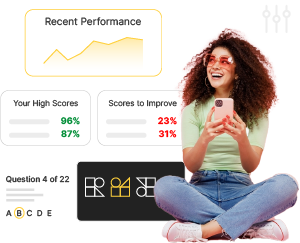
Here are some key tips to help you prepare for and successfully pass a case study exercise at an assessment centre:
- Understand the Brief: Carefully read and analyse the case study brief, making sure you understand the problem or scenario being presented, and the information and data provided. Take notes and identify key issues and opportunities.
- Plan Your Approach: Take some time to plan your approach to the case study exercise. Consider the key challenges and opportunities, and identify potential solutions and recommendations. This will help you structure your thoughts and prioritise your ideas.
- Use Evidence: Use evidence from the case study, as well as your own research and knowledge, to support your ideas and recommendations. This will demonstrate your analytical thinking and problem-solving skills.
- Stay Focused: During the exercise, stay focused on the task at hand and avoid getting sidetracked by irrelevant information or details. Keep the objective of the exercise in mind, and stay on track with your analysis and recommendations.
- Collaborate Effectively: If the case study exercise involves group work, make sure to communicate clearly and effectively with your team members. Listen actively to their ideas, and contribute constructively to the discussion.
- Be Confident: Have confidence in your ideas and recommendations, and be prepared to defend your positions if challenged. Speak clearly and confidently, and use evidence and data to support your arguments.
Here is the summary of what case-study exercises are and how to pass them:
- A case study exercise is a type of assessment where candidates are presented with a hypothetical business scenario and asked to provide solutions or recommendations.
- These exercises assess a range of competencies such as problem-solving, analytical thinking, decision-making, communication, teamwork, and time management.
- To pass a case study exercise, it's important to carefully read and understand the brief, plan your approach, use evidence to support your ideas, stay focused, collaborate effectively, be confident, and manage your time effectively.
Fully understanding the format of the exercise, taking practice case-study exercises and following our tips outlined above will drastically improve the chances of you standing out as a star candidate at the assessment centre.
Get 25% off all test packages.
Get 25% off all test packages!
Click below to get 25% off all test packages.
Case Study Exercise At Assessment Centres
A case study exercise is a practical assessment commonly used in the latter stages of recruitment for graduate jobs. One of several activities undertaken at an assessment centre , this particular type of exercise allows employers to see your skills in action in a work-based context.
What is a case study exercise?
A case study exercise consists of a hypothetical scenario, similar to something you’d expect to encounter in daily working life. You’ll be tasked with examining information, drawing conclusions, and proposing business-based solutions for the situation at hand.
Information is typically presented in the form of fictional documentation: for example, market research findings, company reports, or details on a potential new venture. In some cases, it will be verbally communicated by the assessor.
You may also have additional or updated information drip-fed to you throughout the exercise.
You could be asked to work as an individual, but it’s more common to tackle a case study exercise as part of a group, since this shows a wider array of skills like teamwork and joint decision-making.
In both cases you’ll have a set amount of time to analyse the scenario and supporting information before presenting your findings, either through a written report or a presentation to an assessment panel. Here, you’ll need to explain your process and justify all decisions made.
Historically, assessment centres have been attended in person, but as more companies look to adopt virtual techniques, you may take part in a remote case study exercise. Depending on the employer and their platform of choice, this could be via pre-recorded content or a video conferencing tool that allows you to work alongside other candidates.

What competencies does a case study exercise assess?
There are multiple skills under assessment throughout a case study exercise. The most common are:
Problem solving
In itself, this involves various skills, like analytical thinking , creativity and innovation. How you approach your case study exercise will show employers how you’re likely to implement problem-solving skills in the work environment.
Show these at every stage of the process. If working in a group, be sure to make a contribution and be active in discussions, since assessors will be watching how you interact.
If working solo, explain your process to show problem solving in action.
Communication
How you present findings and communicate ideas is a major part of a case study exercise, as are other communication skills like effective listening.
Regardless of whether you present as an individual or a group, make sure you explain how you came to your conclusions, the evidence they’re based on and why you see them as effective.
Commercial awareness and business acumen
Assessors will be looking for a broader understanding of the industry in which the company operates and knowledge of best practice for growth.
Standout candidates will approach their case study with a business-first perspective, able to demonstrate how every decision made is rooted in organisational goals.
Decision making
At the heart of every case study exercise, there are key decisions to be made. Typically, there’s no right or wrong answer here, provided you can justify your decisions and back them up evidentially.
Along with problem solving, this is one of the top skills assessors are looking for, so don’t be hesitant. Make your decisions and stick to them.
Group exercises show assessors how well you work as part of a team, so make sure you’re actively involved, attentive and fair. Never dominate a discussion or press for your own agenda.
Approach all ideas equally and assess their pros and cons to arrive at the best solution.
What are the different types of case study exercise?
Depending on the role for which you’ve applied, you’ll either be presented with a general case study exercise or one related to a specific subject.
Subject-related case studies are used for roles where industry-specific knowledge is a prerequisite, and will be very much akin to the type of responsibilities you’ll be given if hired by the organisation.
For example, if applying for a role in mergers and acquisitions, you may be asked to assess the feasibility of a buy-out based on financial performance and market conditions.
General case studies are used to assess a wider pool of applicants for different positions. They do not require specific expertise, but rather rely on common sense and key competencies. All the information needed to complete the exercise will be made available to you.
Common topics covered in case study exercises include:
- The creation of new marketing campaigns
- Expansion through company or product acquisition
- Organisational change in terms of business structure
- Product or service diversification and entering new markets
- Strategic decision-making based on hypothetical influencing factors
Tips for performing well in case study exercises
1. process all the information.
Take time to fully understand the scenario and the objectives of the exercise, identify relevant information and highlight key points for analysis, or discussion if working as part of a team. This will help structure your approach in a logical manner.
2. Work collaboratively
In a group exercise , teamwork is vital. Assign roles based on individual skill sets. For example, if you’re a confident leader you may head up the exercise.
If you’re more of a listener, you may volunteer to keep notes. Avoid conflict by ensuring all points of view are heard and decisions made together.
3. Manage your time
Organisational skills and your ability to prioritise are both being evaluated, and since you have a set duration in which to complete the exercise, good time management is key.
Remember you also need to prepare a strong presentation, so allow plenty of scope for this.
Make an assertive decision
There’s no right answer to a case study exercise, but any conclusions you do draw should be evidenced-based and justifiable. Put forward solutions that you firmly believe in and can back up with solid reasoning.
5. Present your findings clearly
A case study exercise isn’t just about the decisions you make, but also how you articulate them. State your recommendations and then provide the background to your findings with clear, concise language and a confident presentation style.
If presenting as a group, assign specific sections to each person to avoid confusion.
How to prepare for a case study exercise
It’s unlikely you’ll know the nature of your case study exercise before your assessment day, but there are ways to prepare in advance. For a guide on the type of scenario you may face, review the job description or recruitment pack and look for key responsibilities.
You should also research the hiring organisation in full. Look into its company culture, read any recent press releases and refer to its social media to get a feel for both its day-to-day activities and wider achievements. Reading business news will also give you a good understanding of current issues relevant to the industry.
To improve your skills, carry out some practice case study exercises and present your findings to family or friends. This will get you used to the process and give you greater confidence on assessment centre day.
Choose a plan and start practising
Immediate access. Cancel anytime.
- 20 Aptitude packages
- 59 Language packages
- 110 Programming packages
- 39 Admissions packages
- 48 Personality packages
- 315 Employer packages
- 34 Publisher packages
- 35 Industry packages
- Dashboard performance tracking
- Full solutions and explanations
- Tips, tricks, guides and resources
- Access to free tests
- Basic performance tracking
- Solutions & explanations
- Tips and resources
By using our website you agree with our Cookie Policy.
- SUGGESTED TOPICS
- The Magazine
- Newsletters
- Managing Yourself
- Managing Teams
- Work-life Balance
- The Big Idea
- Data & Visuals
- Reading Lists
- Case Selections
- HBR Learning
- Topic Feeds
- Account Settings
- Email Preferences
Reengineering the Recruitment Process

The skills needed in many roles are continually changing—and sources of talent are too.
The Covid-19 pandemic has upended many traditional business practices. When it comes to recruiting, the crisis has not so much disrupted as accelerated shifts in the talent landscape that were already under way, leaving many companies poorly served by their current hiring practices. In a period of steep unemployment, it might seem that companies looking to add workers would be in the driver’s seat. But job openings have also been rising in recent months, meaning that competition for top talent remains keen—and in uncertain times, bringing on the right people is more important than ever.
Partner Center

- ORGANIZATIONS
- Apprenticeships
- IACBE Case Competition
- Hawaii Case Competition
- Request for Projects
- What is Experiential LEARNING?
- What is Experiential HIRING?
- Experiential Educators
- Experiential Recruiters
- Experiential Learners
- All Star Students
- Tech Resources
- Project Archive

- Thought Leadership
Tips for Using Case Assessments in the Hiring Process

Case assessments are a great way for companies to evaluate the capabilities of a job candidate. As a hiring tool, case assessments provide employers a sense of how the candidate analyzes information to make decisions and how effectively they communicate their ideas and recommendations. Recruiters can use off-the-shelf case assessments for quick and easy implementation, customize the content to better match the job and skills under assessment, or create their own content to maximize relevance to the organization’s jobs and strategy. Whichever option companies use, there are several factors to consider when selecting and developing case assessment content.
Using case assessment as a key strategy in the selection process starts with identifying the job-related skills that are under assessment. Companies are frequently looking for candidates to demonstrate their ability to analyze information, prioritize responsibilities, offer alternative perspectives, make judgments and recommendations, and communicate their ideas effectively to the intended audience. Applicants are often eager to demonstrate their job-related capabilities, and are more likely to perceive the assessment method favorably and feel positive about the process when it is relevant to the job (Pulakos, 2005). By identifying the skills under assessment first, the case scenario can be better tailored to show how the candidate will respond when faced with a similar situation on the job, provide them the opportunity to showcase their talents, and leave them with a positive impression about the organization and the position for which they are applying.
Because the skills under assessment are most often multi-faceted, case assessments are often complex. Candidates are generally asked to meet a challenge, solve a problem, or answer a question by engaging in a series of tasks, such as gathering and analyzing information, examining alternative solutions, and proposing the most effective solution using supportive evidence. They may be expected to research or utilize data and other information related to the profession such as market studies, financial documents, etc.
Although they tend to be complex, case assessment exercises are generally time limited and should not be burdensome or exploitative. Keep in mind that candidates have other demands on their time; guidance varies, but we suggest keeping case assessment content to 1-2 pages in length and the assignment achievable in 1-3 hours (Sher, 2019). Recognize that candidates may also be concerned that employers will take advantage and use their intellectual work on the case assessment even if they’re not chosen for the position (Pulakos, 2005).
Case assessment content should to be clear, sufficiently detailed, and resourced so the qualified applicant can meet the presented challenge and effectively demonstrate their capabilities to the employer. Given this, when designing the case content consider the following key elements:
- Case scenario
- Supplementary information or data
- Expectations and instructions for completing and submitting their materials
Each of these elements are described in greater detail below.
A. THE CASE SCENARIO
Provide applicants relevant and sufficient information on the background of the case and the current business challenge, problem, or question to be addressed along with outcomes that would indicate a successful resolution.
- Background. Set the stage for the case assessment by providing a reason for the case study and background information about the company (history, market position, etc.) as well as the relevant topic, product, or service that is the subject of the case.
- The Business Challenge. Describe the main, current challenge or problem that needs to be resolved or question(s) needing answered. Include facts and other key pieces of information pertaining to the current challenge. Previous attempts to solve the problem that have failed can also be addressed here.
Examples:
The company is wanting to determine the feasibility of introducing a new product…
The company needs you to prioritize the completion of the following tasks within a given deadline…
- Desired Results: Depending upon the nature of the challenge, you may want to share with the applicant key results or outcomes the company is seeking upon the successful resolution of the challenge, problem or question.
Examples:
The company will have a comprehensive understanding of the competition and potential markets…
The company will have a plan for effectively completing the given tasks.
B. SUPPLEMENTAL INFORMATION
Consider providing additional information such as internal reports and communications, organizational charts and strategic planning documents, key trade publications, raw data, or links to open sources (e.g. website, social media) useful for investigating the challenge or problem.
C. INSTRUCTIONS FOR THE APPLICANT
Be specific about your expectations for formatting and submitting work and how it will be assessed.
- Deliverable. What the applicant should provide to the company (e.g. 2-3 page report including 1-2 recommendations; letter to a client/customer; ideas and suggestions memorandum).
- Additional formatting requirements/special instructions. Any specific format or document type the candidate should use or incorporate (e.g. tables, graphics, Excel).
- Evaluation. The criteria on which the applicant will be evaluated. For instance, you may be evaluating their ability to think critically by making comparisons, assessing the quality of information, or forecasting outcomes, and their communication skills in their ability to write effectively. Rubrics or other evaluation measures to assess applicants’ work and ensure equity and consistency in evaluation of candidates may also be shared with the candidate to promote transparency and encourage their confidence in the process.
CapSource is always looking for ways to connect companies with motivated, qualified candidates and help individuals demonstrate their capabilities through real-world applications. Case assessments are a great way for companies to gather additional data points and essential information to make good hiring decisions and for applicants to demonstrate their job-related capabilities in the hiring process. Let CapSource help you to integrate case assessments into your recruitment and hiring processes by visiting our Open Cases Library of curated business cases, or create your own case assessment using our Case Assessment Builder !
References:
Pulakos, E. D. (2005). Selection assessment methods: A guide to implementing formal assessments to build a high quality workforce. Alexandria, VA: Society for Human Resources Management.
Sher, R. (2019). How To Use ‘Case-Study’ Techniques To Ensure Successful Executive Hires. Forbes. https://www.forbes.com/sites/robertsher/2019/12/04/how-to-use-case-study-techniques-to-ensure-successful-executive-hires/?sh=695b733e4d47
Privacy Overview
Candidates: Are you interviewing and need support?
Customer Stories

Sourcing internal and external candidates at Cracker Barrel
HireVue has allowed the team at Cracker Barrel to measure the quality of both their candidate pool and hires. They’ve turned to HireVue On-Demand interviews and Assessments to eliminate phone screens, assess the skills needed for roles, and boost hiring efficiency.
The Cracker Barrel + HireVue partnership
Marci Sigmund, VP of Talent Acquisition at Cracker Barrel, has been using HireVue for a decade—and she’s found that the relationship is more than just a contract. It’s a relationship built on finding what works for her company, what could work better, and continually striving to hire better people faster.
How Cracker Barrel has boosted efficiency to focus on people
Cracker Barrel has turned to HireVue to not only boost its recruiter efficiency but focus on the personal connections that make hiring special. By automating more of their administrative tasks, they’re able to focus on relationships and connections with candidates.

Burlington empowered to develop personal connections through HireVue science
HireVue’s platform is backed by science, offering data for decision support. By leveraging the tool, the early career team at Burlington is able to provide personal connections to their candidates—serving more as mentors and coaches.
How Burlington swaps degrees for competencies
Learn how Burlington uses HireVue to assess the competencies of their early talent—instead of making decisions based on degrees, alma maters, and GPAs. With HireVue, they’re able to discover what their candidates bring to the table—including the curiosity that can’t be taught.
How Burlington works smarter to unlock early career potential
Learn how Burlington has used HireVue to work smarter—casting a wider net without overworking their team. Learn how they use HireVue technology to unlock the potential of their early career talent by discovering the competencies they offer.

2023 Impact Star Winner: Keurig Dr Pepper
Keurig Dr Pepper was awarded the HireVue 2023 Impact Star Award, recognizing the hiring impact made through implementing HireVue technology.

WTW improves early career performance and diversity outcomes using predictable assessments
WTW is a Professional Services organisation with a global footprint and upwards of 40,000 employees.

Arm uses HireVue to assess for technical and soft skills using a flexible candidate experience
Arm selected HireVue for its ability to consistently assess for both technical and soft skills, as well as improving the candidate and hiring manager experience.
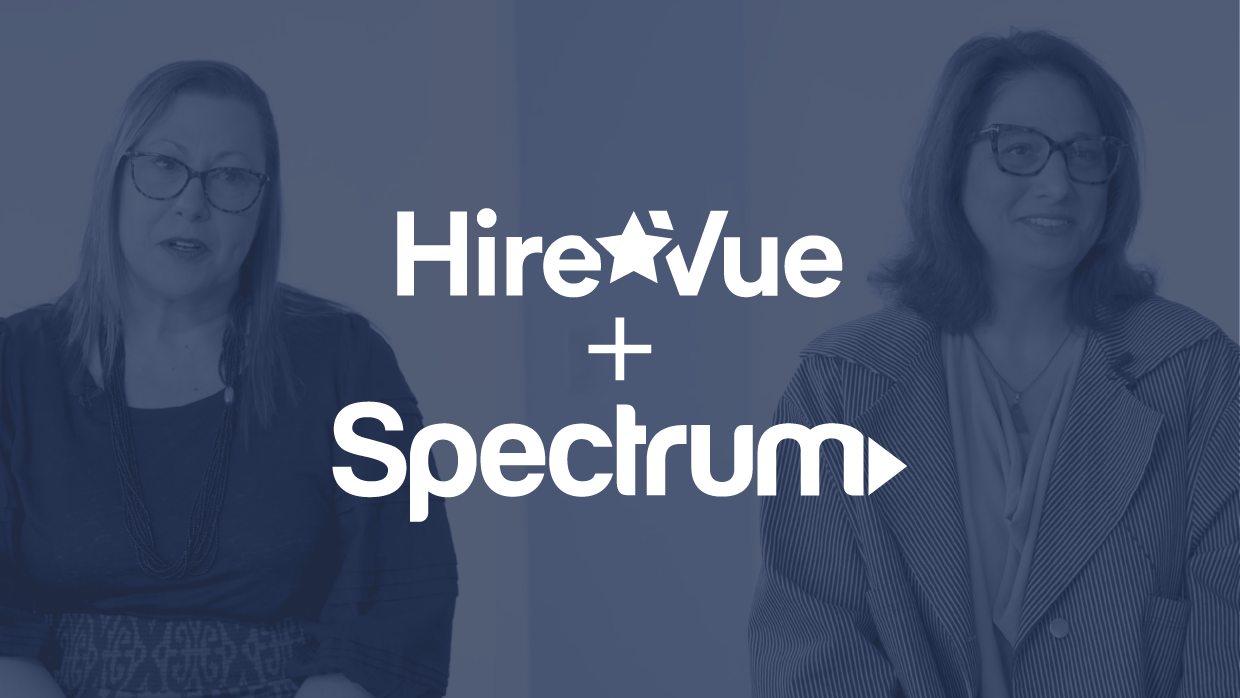
2023 Impact Star Winner: Spectrum
The Impact Award recognizes the hiring impact that was made through implementing HireVue technology. Learn how Spectrum/Charter uses HireVue to lean into science to give their business the best possible outcome with measurable results that impact their bottom line.

The business case for Human Potential Intelligence
Dina Taylor, Chief Evangelist at HireVue, and Mary Kaddah, Manager of Talent Acquisition and Performance Management at the Dubai Future Foundation, sit down to discuss how hiring based on skills, motivations and what a person is capable of, versus what they have done in the past, will unlock limitless potential for both candidates and companies.
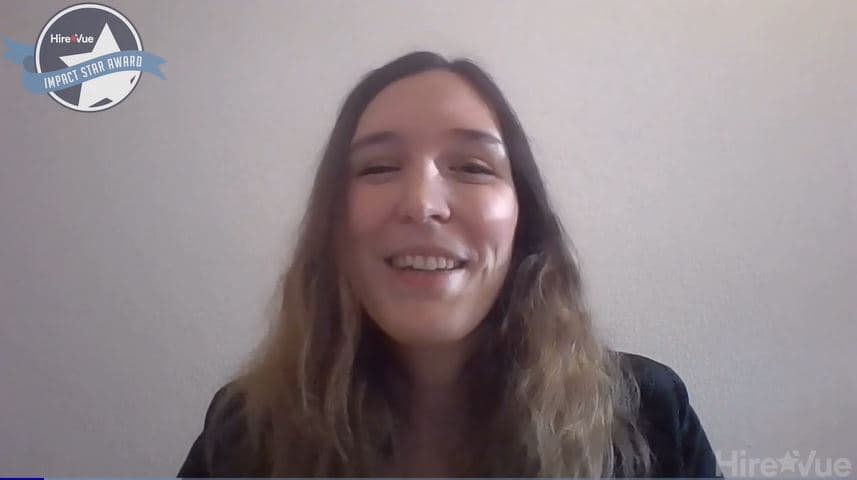
How Nestlé looks beyond a CV for a growth mindset
Learn how Nestlé uses HireVue's Games-based Assessments, AI-enabled Video Interviewing, and the SAP SuccessFactors integration to improve efficiency, time to hire and identify a growth mindset.

- Human Potential Intelligence
- For Candidates
- For Hiring Managers
- HireVue Blog
- Tools for Universities
WHY HIREVUE
- Our Science
- Integrations Partners
- Customer Awards
- Legal Center
- Press & News
- Modern Hire
© 2024 HireVue, Inc. All rights reserved.
- Terms of Use
- AI Ethical Principles
- AI Explainability Statement
This site uses cookies to improve your experience. By viewing our content, you are accepting the use of cookies. To help us insure we adhere to various privacy regulations, please select your country/region of residence. If you do not select a country we will assume you are from the United States. View our privacy policy and terms of use.
- Employee Benefits
- Change Management
- Talent Acquisition
- Applicant Tracking Systems

7 Steps to Building a Successful Talent Acquisition Team (+Netflix Case Study)
Analytics in HR
AUGUST 8, 2023
Talent acquisition team structure Examples of organizations’ talent acquisition team structures 7 Steps for building a talent acquisition team How to measure the success of a talent acquisition team Case study : Netflix’s talent acquisition team What is a talent acquisition team?
15 HR Analytics Case Studies with Business Impact
NOVEMBER 5, 2018
For this article, I have collected 15 of the best HR analytics case studies I’ve come across in the past two years. Each of these case studies are connected with a concrete business impact. For each case study , I will refer to their original publication. 15 HR Analytics Case Studies .
This site is protected by reCAPTCHA and the Google Privacy Policy and Terms of Service apply.
- How to Onboard New Hires in 10 Minutes or Less
- How To Empower Your Workforce With Modern Fertility Benefits
- Mastering Remote Onboarding: Proven Strategies for Seamless New Hire Integration
- Engage, Empower, Excel: Transforming Performance in the New Era of Work
- Diversity Recruiting 101: How To Attract And Retain Talent In 2025
MORE WEBINARS
Trending Sources
- Engage2Excel
- EmployeeConnect
- UrbanBound HR

Case Study: Strategic Workforce Planning for Rail Infrastructure Managers
MARCH 30, 2020
In this case study , strategic workforce planning is applied to solve this national problem, impacting millions of commuters. The TWP process estimates the turnover in the coming 18 months to plan and execute required recruiting efforts, rigorous psychological testing, and 9 months of training periods for new employees.

Children’s Mercy Hospital Case Study
Stories Incorporated HR
APRIL 8, 2020
Want this case study as a PDF? How Children’s Mercy is Using Content to Drive Recruiting Efforts. For example , nursing job descriptions now start with a call to action, not to apply, but to watch a video to hear the experiences of their nursing staff. Reading Time: 6 minutes. Find it here !

Finding the Best California SaaS Software Recruiters: A Comprehensive Guide
Recruiters Lineup
AUGUST 10, 2024
However, recruiting in this space isn’t just about filling roles; it’s about finding experts who can drive innovation and growth. The challenges of sourcing skilled professionals in this fast-paced market are unique, requiring recruiters specializing in the nuances of SaaS.

What is HR Analytics? All You Need to Know to Get Started
FEBRUARY 28, 2024
This has a significant impact on organizational performance , leading to as much as a 25% rise in business productivity, a 50% decrease in attrition rates, and an 80% increase in recruiting efficiency. Example : Annual employee turnover rate.) Example : Examining unplanned absence data to identify absenteeism drivers.)

13+ HR Case Studies: Recruiting, Learning, Analytics, and More
SEPTEMBER 3, 2019
As someone who has worked in the HR profession, I know well the full value of stories, examples , and case studies . While much of the work we do at Lighthouse Research & Advisory focuses on quantitative research studies , we do a fair amount of qualitative research as well. How to Lead a Hiring Team.
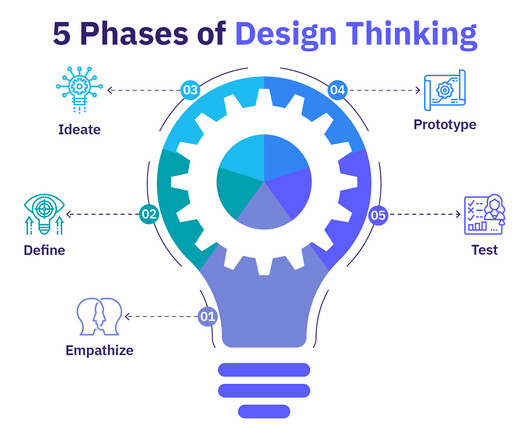
How To Apply Design Thinking in HR (+ 3 Case Studies)
AUGUST 16, 2023
The benefits of a design thinking approach in HR The 4 principles and 5 phases of design thinking 4 Ways to apply design thinking to HR processes Successful implementation of design thinking in HR Design thinking in HR examples What is design thinking? Recruitment and onboarding Consider how candidates experience the recruitment process.

Recruiting Feedback Case Study: The Recruiting Revenue Connection
MARCH 11, 2019
In our latest recruiting feedback case study , Craft Brew Alliance (CBA) demonstrates that asking the right questions at the right time can dramatically affect overall recruiting effectiveness AND uncover powerful connections between recruiting and revenue generation. Recruiting and Revenue.
Using Talent Sourcing Platforms To Save Recruiter Time
Select Software Reviews
MAY 17, 2019
Talent sourcing has become an incredibly important part of any recruiting strategy. In response, recruiters have been forced to rely more and more on outbound means to engage potential hires. Full desk recruiters don’t want to source. Source cfo.com. Sourcing is all these companies do.

Finding the Perfect Fit: How Finance Recruiters Can Help Hiring Managers and Job Seekers
Professional Alternatives
FEBRUARY 2, 2024
[link] Finding the Perfect Fit: How Finance Recruiters Can Help Hiring Managers and Job Seekers The role of finance recruiters in the job market The job market can be a daunting place for both hiring managers and job-seeking candidates, especially in the highly competitive field of finance.

The Evolution of HR with AI Technologies
FEBRUARY 19, 2024
Traditionally, HR departments focused on managing employee records, overseeing recruitment processes, and ensuring compliance with labor laws. One of the most significant changes was in recruitment and talent acquisition. Case studies from various companies show the success of integrating AI into HR strategies.

Case Study: MarketGap’s Innovative Strategy for Agile Workforce Evolution
JUNE 30, 2023
Partnering with organizations and agencies that focus on promoting minority talents, such as minority professional associations and diversity-focused recruitment firms. The post Case Study : MarketGap’s Innovative Strategy for Agile Workforce Evolution appeared first on Hppy.

Case study: Executing a recruitment marketing video plan
MAY 19, 2021
Executing a recruitment marketing video plan sometimes requires research and buy-in. This case study is an excerpt from our new ebook, Getting Buy-In for Your Employee Story Project: The Ultimate Guide to Employer Branding and Recruitment Marketing ROI. Reading Time: 7 minutes. Brittni says, “I knew Stories Inc.

OKR Examples: How to Write OKRs that Drive Impact
OCTOBER 19, 2022
In this article, we’ll break down the framework for writing impactful objectives and key results and share some OKR examples you can use as a guide when crafting your own. Example of a poorly-written objective: Provide better customer service. Example of poorly-written key results: Treat our customers well every day.

9 Digital HR Case Studies with Business Impact
Digital HR Tech
OCTOBER 23, 2019
In this article, we have collected some of the best Digital HR case studies we’ve come across. They’re good examples of organizations that really get Digital HR and make the most of it. Each case study is connected to a specific business imperative. What’s in? Anchor Trust 2. Deloitte 5.

Case Study: Credit Union
OCTOBER 1, 2020
Today’s case study explains how TimeSimplicity can help a typical small credit union maintain quality customer service while controlling operating expenses through automated credit union employee scheduling. Our example organization is Springfield Community Credit Union. How much can you save? ArticleID 7414.
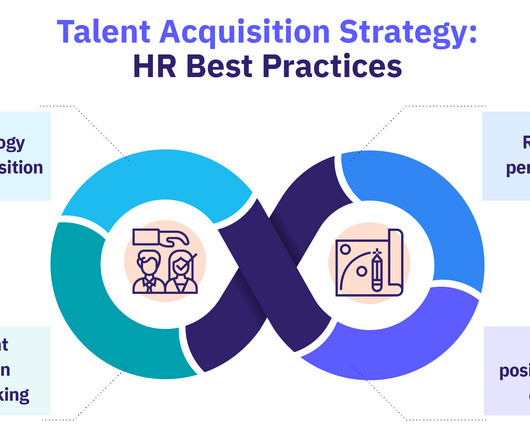
Develop Your Talent Acquisition Strategy With 6 Practical Examples
JULY 31, 2023
In this article, we’ll explore what a talent acquisition strategy looks like, how to develop a talent acquisition strategy, along with some best practices and examples to help you move your company forward. Software and applicant tracking systems can help you sort through your talent pool, assess candidates, and recruit .

Why You Shouldn’t Start Job Ads with ‘About Us’: Best Tips to Boost Recruitment
AUGUST 21, 2024
That meant recruiters had to learn new skills and competencies, like applying data-driven AI solutions that sped up the hiring process in the face of skill shortages. Rather, it could signal a crossroads to rethink your hiring and recruitment strategy. Essentially, this plays an active part in business intelligence initiatives.

Creating Employment Opportunities With Flex Manufacturing (i4cp login required)
MARCH 7, 2023
This case study represents one of the submissions for i4cp's 2023 Next Practice Awards, winners will be honored at the i4cp 2023 Next Practices Now Conference. You can also view other Next Practice Award case studies . A cross-functional team formed to include the Director of Manufacturing, his HRBP and Recruiting .

Case Study: The Value Of Pay Transparency And How To Implement It
HR Tech Girl
JULY 5, 2023
Here I aim to shed light on what pay transparency looks like at Compt, explain its mechanics and influence on overall compensation structures and raises, present real-world examples of its benefits, and provide practical considerations for organizations contemplating this approach.
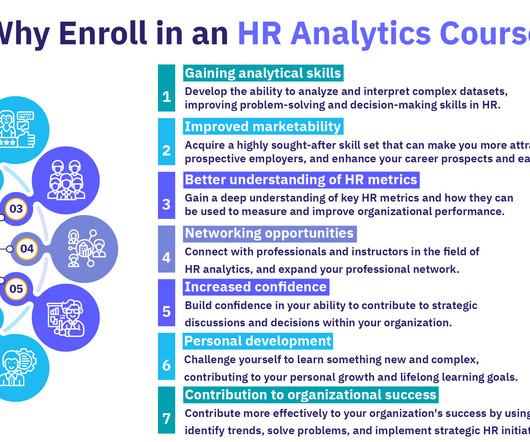
13 HR Analytics Courses Online To Check Out in 2024
FEBRUARY 23, 2024
All subjects are illustrated by real-life examples of how various organizations tap into HR analytics techniques to help them flourish. A dashboard example is included below. It includes facilitated discussions, case studies , group and individual activities, and self-assessments. Want to know more?

Healthcare HR and Nursing Leaders: Partnering for Improved Outcomes
FEBRUARY 11, 2019
Creating a partnership between nursing leaders and HR, though, can help organizations do a better job recruiting and retaining nurses, leading to better workforce management for HR and improved care for patients. With a projected nursing shortage in the next decade , recruitment has never been more important for healthcare organizations.

Recruit Better: Employee Discount Programs and Taxes
HR Bartender
APRIL 16, 2017
Examples of de minimis perks include occasional tickets to theatres and sporting events, as well as invitations to company-hosted parties and picnics. That helps strengthen relationships and increase engagement with employees, and it can serve as a competitive differentiator and recruitment tool.

How to Identify Bottlenecks in Your Recruitment Process
DECEMBER 9, 2014
Take recruiting for example . When the recruiting process is broken, everybody knows it. And in my experience, everyone blames everything on recruiting being broken. “We Problems (or contraints) in recruiting isn’t something to ignore because finding top talent is essential to the business.

What is HR Automation? A Guide with Practical Examples
APRIL 8, 2021
HR is responsible for recruiting , onboarding and offboarding employees, training and development, payroll and timekeeping, tracking vacation and sick days, and employees’ general well-being within the organization. Benefits of HR automation Examples of HR automation in action The best HR automation tools currently on offer.
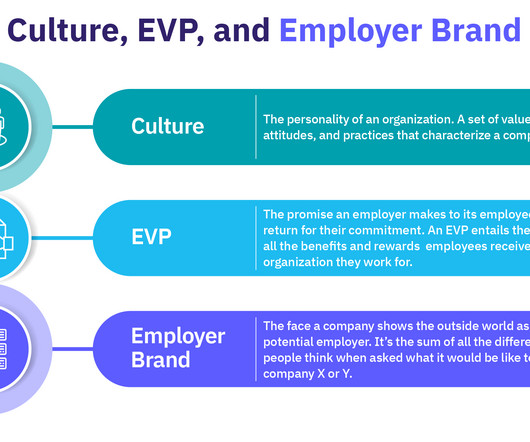

13 Great Employer Branding Examples To Inspire You in 2024
SEPTEMBER 15, 2023
In this article, we’ll share 13 exceptional employer branding examples and what we like about them to inspire you in building your employer branding strategy. Types of employer branding content Employer branding examples 1. Now, let’s dive into the best employer branding examples ! Contents What is employer branding?

People Analytics and HR-Tech Reading List
Littal Shemer
OCTOBER 11, 2022
“The book helps professionals, researchers, employers, and everybody interested in the world of work to understand the past, present, and future of recruitment . . “The book helps professionals, researchers, employers, and everybody interested in the world of work to understand the past, present, and future of recruitment .

Navigating Uncertainty: The Strategic Imperative of Investing in People and HR Tech
FEBRUARY 7, 2024
Optimizing Operations HR tech serves as a catalyst for operational efficiency, streamlining processes such as recruitment , onboarding, and performance evaluation. This collection of case studies showcases success stories where savvy UAE companies harnessed the power of HR tech to drive out of the box results: 1.
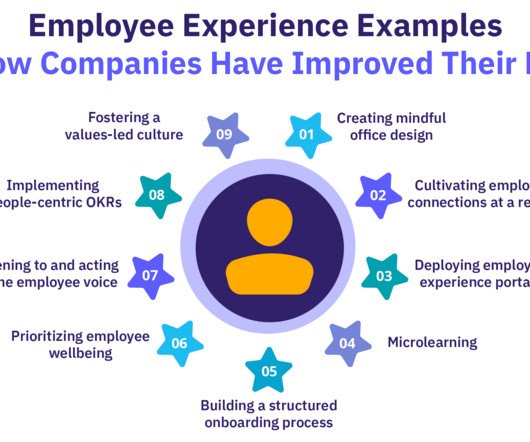
9 Inspiring Employee Experience Examples To Boost Your EX
JANUARY 12, 2024
These touch points are encounters with your policies, processes, and strategies from the first contact during recruitment to the offboarding and alumni policies. One of the best ways to learn is to look at specific employee experience examples , case studies , and initiatives deployed in other organizations. Contents 1.

Why talent acquisition pros must learn to analyze data, according to a new book
HRExecutive
MARCH 25, 2024
The consulting firm also found that most HR departments use two or more platforms to facilitate the recruiting process. Throughout the chapters, practical examples and case studies from organizations across the globe provide real-world context. “We A study performed by St.
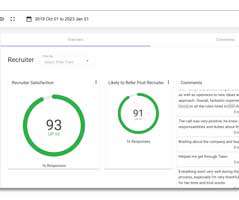
Trend: Candidate Feedback for Recruiter Reviews and Managing Recruiters
JANUARY 13, 2023
Using candidate feedback for recruiter reviews and managing recruiters is fast becoming standard practice these days. In fact MOST Survale clients use some form of candidate and/or hiring manager feedback in quarterly or annual recruiter reviews, incentive compensation or other systems for managing recruiters ’ performance.

A Real Life Example: The Benefits of Recruiting Chatbots
SelectSoftware
APRIL 28, 2020
If you’re looking to save time with your recruiting efforts, check out this case study .
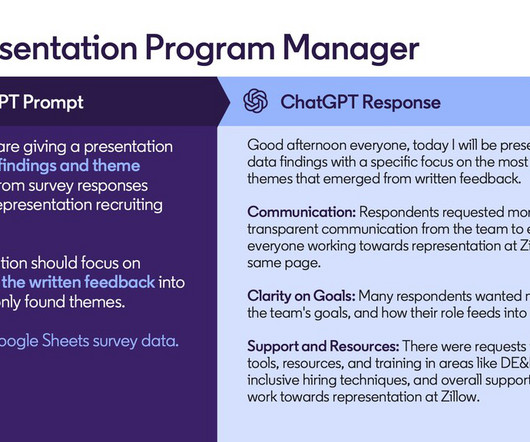
5 Ways to Revolutionize Recruiting with AI
Linkedin Talent Blog
DECEMBER 6, 2023
Namely, it gives recruiters more time for the human aspects of their work. “AI In one example , the team prompted the AI to “Act as if you’re giving a presentation on key data findings and theme takeaways from survey responses around our representation recruiting survey.” million job applications.
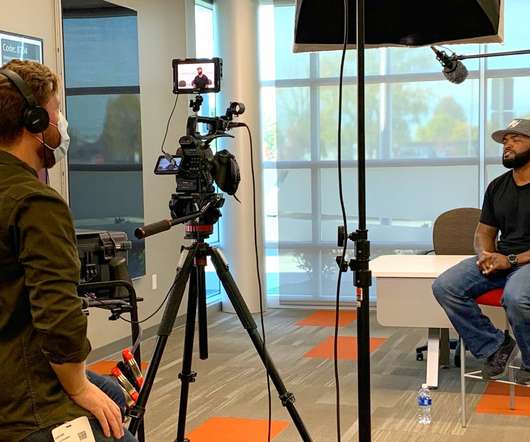
Best recruitment marketing blogs of the year by Stories Inc.
DECEMBER 22, 2020
At the start of 2020, we focused on providing for you the best recruitment marketing blogs possible. All in all, we hit “publish” over 100 times this year— including virtual content creation resources , a COVID-19 hub , case studies , downloadables , and original articles. Crisis communications for recruitment marketers.

Recruiting in the Era of International Accounting Standards: A Hiring Manager’s Handbook
FEBRUARY 9, 2024
Partnering with a Global Accounting Recruitment Agency Navigating the global accounting landscape and finding top talent can be a daunting task. One effective solution is to partner with a global accounting recruitment agency. Ready to elevate your expertise and drive success in global accounting?

Gamification in the Workplace: Stats, Engagement, and Examples (Survey)
OCTOBER 9, 2019
The most simple example is that of customers earning (digital) loyalty points unlocking a reward once they’ve reached a certain level. How employees experience gamification Gamification, motivation, and engagement Examples of gamification at work Recruitainment FAQ. Examples of gamification at work. What is gamification?

Improving Diversity Recruiting Strategy: 7 Practical Tips
SEPTEMBER 8, 2020
People say that using a diversity recruitment strategy is the right thing to do. This post is here for companies that need to improve their diversity recruiting strategy and take advantage of these benefits. By the time you’re done reading, you’ll know what it takes to recruit top diverse talent and retain them effectively.

Talent Mobility Webinar: How to Recruit and Retain Internal Talent
NOVEMBER 7, 2016
Recruiting : instead of immediately looking externally for talent, you consider your internal talent inventory to determine if you have someone you can move into the role. Each case study tells a slightly different story, and I’m excited to share those examples . It has a whole host of impacts and benefits.

Employer Branding and EVP: 3 Ways Sky Does it Right (case study)
JULY 3, 2019
.’ In this episode, host Jörgen Sandberg talks with Sophie Holmes, Head of Employer Brand Attraction at Sky and as such responsible for everything from employer brand to attracting great talent and the candidate experience across the entire recruitment process. How do we embed this in our recruitment team? The channels you use.

Organizations Can Use Assessments to Bridge the Skills Gap
SEPTEMBER 5, 2017
According to the Society for Human Resource Management (SHRM) report “ The New Talent Landscape: Recruiting Difficulty and Skills Shortages ”, 68 percent of HR professionals are having trouble recruiting candidates for full-time positions. Organizations Can Use a 3-Strategy Approach to Recruitment . Enjoy the post!).

Case Study Underscores Why HR Change Management Skills Are Critical
HR Daily Advisor
DECEMBER 8, 2017
Here is an example to illustrate the point: This is a true story about Robert, a director of Recruitment and Human Development for a major chemical company. Improve the company’s college recruiting program designed to bring into the company “high potential” entry-level engineers and technically-trained individuals.

Maximizing Talent Acquisition Success: The Qualigence and Valvoline Partnership
Qualigence Blog
MARCH 14, 2024
This blog explores the transformative partnership between Qualigence, a leader in recruitment and talent strategy, and Valvoline, a highly respected automotive services and products provider. Resource Augmentation : Leveraging additional full-cycle recruiting resources to enhance Valvoline’s recruitment capabilities.

#GamifyHR HR / Learning Gamification Case Studies
Strategic HCM
MAY 18, 2014
Day 3 of Fleming''s Gamification in HR Summit focused on learning, particularly in this case study from Tuba Surucu from Yapi Kredi Bank in Turkey. So again, this is gaming rather than gamification - and quite similar to the recruitment case studies in fact.
Stay Connected
Join 398,000+ Insiders by signing up for our newsletter
- Participate in Human Resources Today
- 2019 Human Resources Today Summer Reading List
- Stay At Home Reading List
- Add a Source
- Add a Resource
- See All
- 2018 Human Resources Today MVP Awards
- 2017 Human Resources Today MVP Awards
- 2019 Human Resources Today MVP Awards
- 2020 Human Resources Today MVP Awards
- 2021 Human Resources Today MVP Awards
- 2022 Human Resources Today MVP Awards
- Wed. Aug 28
- Tue. Aug 27
- Mon. Aug 26
- Sun. Aug 25
- Aug 17 - Aug 23
- Employee Engagement
- Onboarding Software
- Talent Management
- Performance Management
- Time and Attendance
- More Topics

Input your email to sign up, or if you already have an account, log in here!
Enter your email address to reset your password. a temporary password will be e‑mailed to you., be in the know on.
Human Resources Today
Expert insights. Personalized for you.
We organize all of the trending information in your field so you don't have to. Join 398,000+ users and stay up to date on the latest articles your peers are reading.

Get the good stuff
Subscribe to the following Human Resources Today newsletters:
You must accept the Privacy Policy and Terms & Conditions to proceed.

You know about us, now we want to get to know you!
Check your mail, we've sent an email to . please verify that you have received the email..
We have resent the email to
Let's personalize your content
Use social media to find articles.
We can use your profile and the content you share to understand your interests and provide content that is just for you.
Turn this off at any time. Your social media activity always remains private.
Let's get even more personalized
Choose topics that interest you., so, what do you do.
Are you sure you want to cancel your subscriptions?
Cancel my subscriptions
Don't cancel my subscriptions
Changing Country?
Accept terms & conditions.
It looks like you are changing your country/region of residence. In order to receive our emails, you must expressly agree. You can unsubscribe at any time by clicking the unsubscribe link at the bottom of our emails.
You appear to have previously removed your acceptance of the Terms & Conditions.

We noticed that you changed your country/region of residence; congratulations! In order to make this change, you must accept the Aggregage Terms and Conditions and Privacy Policy. Once you've accepted, then you will be able to choose which emails to receive from each site .
You must choose one option
Please choose which emails to receive from each site .
- Update All Sites
- Update Each Site
Please verify your previous choices for all sites
Sites have been updated - click Submit All Changes below to save your changes.
We recognize your account from another site in our network , please click 'Send Email' below to continue with verifying your account and setting a password.
You must accept the Privacy Policy and Terms & Conditions to proceed.
This is not me
MBA Knowledge Base
Business • Management • Technology
Home » Management Case Studies » Case Study: Google’s Recruitment and Selection Process
Case Study: Google’s Recruitment and Selection Process
Google Inc., the world’s largest and most popular search engine company, is also one of the most sought after companies in the world. Due to the popularity of the company caused by its highly attractive compensation and benefits packages for its employees, millions of job applications are constantly received by Google on an annual basis. While other companies envy Google for attracting and acquiring such highly-talented and highly-skilled individuals from all over the world, the company finds it as a serious cause of dilemma.
When Google Inc. topped the ranks for the most popular companies in the world , it could no longer contain the number of applications it receives from thousands of job hunters from all over the globe. And since the company aims to hire only the best employees that fit the organizational culture and standards of Google , the company started thinking of ways to better improve its recruitment and selection process for its would-be employees.

The Google Inc management also decided to focus on the distinct behavioral characteristics and personality that separates Google employees from any other employees in other known companies. It shifted its focus from academic qualifications and technical experiences to the applicant’s personality , creativity , leadership capacities , innovative and non-conventional ways of thinking and the applicant’s overall exposure to the world. The academic qualifications and the intensive job experience just came in as second priorities of the company in choosing the best candidates for any open positions.
The Google Recruitment Process
One of the most notable statements of Eric Schmidt , the CEO of Google Inc. is that “Google invests in people.” The main reason why people from different cultures, have been dreaming of being recruited and hired by Google is that the company offers possibly the most outstanding job compensation packages any normal employee could ever enjoy.
In order to attract the best employees, Google draws them by the promise of wealth and luxury, providing their employees with almost everything an employee could possibly need, from absurdly high compensations to extravagant and luxurious benefits like gourmet food, carwash, gym, snacks, exercise classes, dry cleaning services, car services, haircuts, oil changes, massages, checkups and many more, all for free.
Another applicant who also have had experiences in the recruitment process of Google claims that his Google experience was one of the most nerve-wracking adventures of his life. The interviewers were looking for extremely bright individuals and so the recruitment method was filled with IQ tests, brain teasers, algorithms, data structures, and a lot of mathematics involved in it.
The Google Selection Process
Google is no doubt the world’s best recruitment leader. Google is known for various unique approaches that it has utilized in order to attract the cream of the crop or the best of the bests. One way is through employment branding. Google has so successfully utilized their brand in order to attract the most talented and highly-competent individuals in the world. Because of their claim of providing the best employee-employer experience supported by the many perks, benefits and high salaries that Google employees get to enjoy, Google became the most desired companies for men and women in the world.
One notable recruitment technique that Google utilized in 2006 was the targeted and unobtrusive approach to sending recruitment messages. Google crafted a simple technique to recruit the best students in certain schools and universities to work for them. They allowed people from these schools to access the search portal of Google wherein the students’ IP address would be identified to see from what organization the person belongs into. The technique was successfully executed using a minimalist and unobtrusive style of recruitment wherein below the search box, the Google system would know whether the targeted student is graduating or not and whether or not they intend to work for Google after graduation. The approach was definitely a successful micro-targeted approach. It was also in the same year when Google opened up to the idea of an Employee Referral Program. In putting up this program, Google made sure that it would deliver them a world-class employee whose personality, qualifications and work ethics reflect the Google standards.
A year passed by and Google’s attempts for recruitment innovations continued to improve. In 2007, Google developed a simple and effective assessment tool to screen its millions of applicants all over the world via an algorithm assessment tool. The algorithm technique effectively separated the top and the best performers from thousands of candidates vying for a position. Moreover, the assessment tool was made sure to successfully predict the best possible candidates from the least and the average and has managed to resolve the issue on the usual assessment tools being used by most companies, relying mainly on the academic qualifications and intensive industry and job experience.
The secret to be selected as a Google employee is that one has to think a lot like an “engineer”. Apparently, Google expects their employees to be highly quantitative and highly analytical as well as highly capable of dealing with too many data all at the same time. During the interviews, an applicant must also be able to demonstrate his skill or capacity by writing codes, intelligently analyzing case studies and brain teasers and solving algorithmic problems on the spot. Also, Google is searching for applicants who are highly practical and are capable of making something out of nothing that people can make use of.
The Google Interview Process
Since Google is known to be the ultimate recruitment and selection machine, its interview processes are also the most grueling experiences an applicant could ever have. Usually, the interviews begin using the telephone. Once the phone interviews conducted have been successful, the applicant would be scheduled by the recruitment officer and be invited for a series of five to ten interviews in one day with ten different people. For some people who have successfully undergone this process, they described it as the most excruciating employment experience of their lives as a lot of mental gymnastics were necessary to prove your skills.
Moreover, other applicants can rate and share comments on another applicant which Google can track and use as another basis for hiring or not hiring an applicant. Overall, the process was a lengthy, tedious and nerve-wracking experience which can possibly traumatize anyone whose dream is to work for one of the most prestigious companies in the world. Nevertheless, the perks and benefits are limitless and are more than enough to compensate for such a tough employment experience.
Related posts:
- Best Practices in Recruitment and Selection
- How to Improve Your Recruitment Process
- Integrity Testing in Employee Selection Process
- How Blockchain Transforms the Recruitment Process?
- Recruitment Process Outsourcing (RPO) – Definition, Benefits and Risks
- Recruitment Process
- Case Study: Restructuring Process of Volkswagen
- Type of Tests Taken in the Selection Process
- Types of Interview Conducted in the Selection Process
- Selection Process in Human Resource Management
Leave a Reply Cancel reply
Your email address will not be published. Required fields are marked *
Recent Posts
- Key Performance Indicators (KPI) – Definition and Implementation
- The Nadler-Tushman Congruence Model
- Five Stages Of Grief – Understanding the Kübler-Ross Model
- Advantages and Limitations of Prosci ADKAR Model
- Case Study: Starbucks Survival From the Financial Crisis of 2008
- Market Economy – Overview, Features, Characteristics, Advantages and Disadvantages
- Monopsony and Competition Law in Indian Context
- Case Study on Corporate Governance Failures: The Collapse of HIH Insurance
- Underpricing of Initial Public Offering (IPO) – Meaning and Reasons
- How to Choose the Best Payment Gateway in 2024
Recent Comments
- VUNOKUHLE A SENTANE on Elements of the Communication Process
- Skip to content
Interviews and assessment centres
Coping with case studies for graduate jobs.
targetjobs editorial team
25 Jan 2023, 13:39
Our tips on how to prepare for an assessment centre case study exercise will help you show graduate recruiters how well you could perform in the job.

Case studies at graduate assessment centres allow an employer to see you in action. An interview is all about you telling recruiters what you can do; the case study is about showing them, and so it’s arguably one of the fairest and most realistic components of a typical assessment day.
What do graduate assessment centre case studies involve?
The case study exercise can be for individuals or groups. You will usually be given some information about a work-related scenario and invited to examine the evidence before presenting your findings and solutions – either verbally (in a presentation or case study interview) or in written form. You may also be drip-fed additional information to assess and respond to throughout the allocated time.
At virtual a assessment centre, candidates are usually sent to a part of a platform to view the case study briefing pack before joining the rest of their group in a breakout room.
- Discover what virtual assessment centres involve and how best to approach them
Example assessment centre case study exercise 1
The following group exercise is a genuine investment case study. Candidates have to work together to find answers and respond to incoming news and data. They then have to make a presentation to a ‘management board’.
A publisher of scientific journals and books is looking to make a significant acquisition. It has identified a target company and approached a number of investment banks for their views on the merits of a potential deal and a target price. Based on these presentations, the publisher will decide whether to proceed with a bid and, if so, select one bank to act as their adviser.
Your team is one of the investment banks bidding to win the mandate. You need to: analyse the figures provided; to review the marketplace, your potential client (the publisher) and the target company; and to prepare a five-minute presentation giving your recommendations, eg whether to go ahead, go ahead under specific conditions etc.
Example assessment centre case study exercise 2
This is a similar example of a case study used for commercial and marketing graduate programmes. In this case, the groups are given a pack with details of the product range, sales figures, marketing campaigns and news clippings. The basic problem in this type of scenario is that a product range or the company receives some negative publicity on the eve of a new product launch or marketing campaign; assessors are interested in whether and how you would respond to it.
You are a member of marketing team at the global organisation, Choc-O-Lot Ltd. It manufactures and distributes chocolate products throughout the UK and Europe. Its flagship bar is ‘Dairy Dream’, but the business has expanded rapidly over the past eight years, launching new products and diversifying into new areas (such as running chocolate-themed experience days). The company is planning a huge brand relaunch. Just as Choc-O-Lot is about to launch a marketing campaign, an article appears in the national press alleging that Choc-O-Lot treats its workers, and members of its supply chain, poorly. It is widely shared on social media, with calls for a boycott. What would you do?
Tips for preparing for the case study exercise in advance
- Read the organisation’s graduate recruitment literature and check its website for sample case studies and recent press releases. Try to get a feel for the type of work it’s involved in and the kind of business decisions it has to make or advise clients on. Read up on issues affecting the industry the employer works in; it might give you an advantage when evaluating options.
- Practise your mental arithmetic, as you may have to demonstrate your quantitative ability without a calculator.
- Practise mock case study exercises. Go to AssessmentDay , our commercial partner, for free and paid-for example case studies. Check, too, with your careers service, as many run workshops on how to successfully prepare for case study exercises.
Get the insights and skills you need to shape your career journey with Pathways. Informed by years of conversations with recruiters, this course will give you the best tips and resources, allowing you to feel more at ease presenting to others.
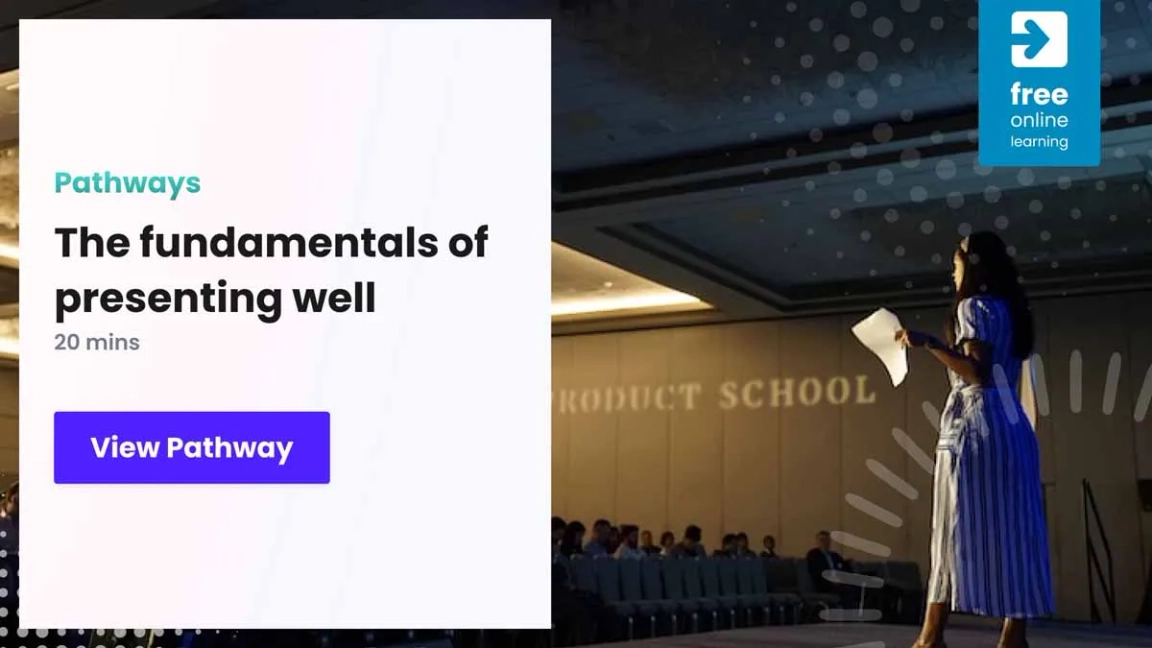
Tips for approaching the case study exercise on the day
- Be clear about what you’re being asked to do. Understand what the problem is, what your role is and what your objectives are.
- Start by reading through the information pack and assessing which parts of the information are relevant – you should be able to annotate the pack. Then, you might want to list key points to be considered when coming to your solution or to brainstorm possible solutions, before considering the pros and cons to each one.
- Manage your time to ensure you complete the exercise. If you’re working in a group you could volunteer to be the timekeeper or ensure that someone else takes on this role. Allow time to prepare for the final presentation at the end of the session, if one is required.
- If you’re working in a small group you could divide up the tasks between you. You could nominate someone to assess any new information passed to the group during the course of the exercise. You could also nominate a note-keeper.
- In a group exercise, don’t dominate but do contribute to discussions. Articulate what you’re thinking so the assessors can see how you approach problems. Ask for more information or clarification if you’re unsure.
- Don’t lose sight of your objectives. The final presentation or written report should be relevant, clear and concise, and should include a summary of your conclusions and recommendations.
Tips for great presentations at graduate assessment centres
- Make sure the presentation is delivered in an appropriate style for the target audience. If your briefing scenario states that you are presenting back to a client, address the assessors as if they are clients. Consider what they are likely to know about the industry and what they don't know.
- If you are asked to make a recommendation or give a view, make this the start point of your presentation, and then present your reasoning and analysis.
- Think carefully about who and how many people will present back – switching between presenters needs to be quick and slick. If you don’t present back, nominate yourself as someone who will respond to questions.
- How to structure and deliver a great presentation at an interview or assessment day .
targetjobs editorial advice
This describes editorially independent and impartial content, which has been written and edited by the targetjobs content team. Any external contributors featuring in the article are in line with our non-advertorial policy, by which we mean that we do not promote one organisation over another.
Related careers advice
Impress your interviewers: the case study
- Management consulting +2

The graduate's guide to assessment centres

Written exercises at assessment centres: showcase your professionalism

We've got you
Dr John Sullivan Talent Management Thought Leadership
Amazon recruiting – a case study of a giant among children.
January 17, 2022
Compare their results to all others, and you too will call Amazon… A Giant Recruiting Machine.
Note this case study is designed for quick scanning.
Yes, Amazon recruiting is in a class by themselves because they relentlessly hire when others cry for applicants. Of course, I don’t loosely use the phrase “A giant among children.” However, after doing numerous corporate case studies over the years covering other recruiting powerhouses (including Google, Apple, and Facebook). I quickly found that their record recruiting volumes across a broad range of jobs and locations could only be labeled as breathtaking. And just by chance, if you think that I’m not giving enough credit to most other corporate recruiting functions (even Google pales in comparison). You should realize that only a mere 18% of HR professionals even describe their own recruiting function as “top-notch” or “advanced.”
| – during our severe labor shortage in 2021. Amazon hired a record-breaking 500,000 employees worldwide, actually doubling the previous year’s hiring total (the previous recruiting leader Google hired a mere 20,000.) In addition, literally, everyone wants to work there. Because LinkedIn named Amazon as the #1 place for US workers in 2021. They are so popular that they received an astonishing 30 million job applications (that’s not a typo) for their open jobs, 10 times the previous 3 million record at Google. Last year Amazon even received a record 1 million applications during a single week! |
The Six Pillars Of Recruiting Excellence At Amazon
This Amazon case study reveals the many factors that cause Amazon’s recruiting function to be so far ahead of the competition. They are truly a giant because they excel in each of the six pillars of excellence in recruiting. The six pillars that make Amazon so successful are:
- Their recruiting impacts business results
- Their proven capability of handling huge recruiting volumes across a wide range
- Their fanatical insistence on quality hires
- A scientific data-driven recruiting approach is the foundation of their success
- They utilize a one-size-fits-one agile hiring process
- Their targeted recruiting sub-programs are second to none
Let’s jump immediately to the first and most important strategic pillar – Amazon’s record-breaking strategic business and recruiting results.
Pillar #1. Amazon’s Recruiting Impacts Business Results
Amazon recruiting is aiming to go beyond simply producing recruiting results. And to also directly impact their corporation’s business results. Those results include:
- Hiring is the single most important element in Amazon’s business success – Jeff Bezos made it clear. “Setting the bar high in our approach to hiring has been, and will continue to be, the single most important element of Amazon.com’s success” (that’s not just the most important HR function, but the most important business function). Jeff began making this recruiting priority clear in the company’s very first annual shareholder letter in 1998. Most other corporations don’t admit this reality. But, it’s simply not possible for a large corporation to innovate and grow rapidly without fully funded exceptional recruiting.
- Yet with all this emphasis, recruiting remains their primary challenge – The CFO recently publicly revealed that even with its current high priority, recruiting maintains a primary challenge. When he noted, for example, in the package movement area, “The availability of workers is Amazon’s primary challenge .” Rather than resting on their laurels, they realize that they continuously need to get much better is a primary reason they continue to improve in recruiting.
- Amazon’s size and growth are made possible by its excellence in recruiting – the prime limiting factor that restricts the company from maintaining its quantum growth rate is the ability to successfully recruit a huge volume of employees each year. And because Amazon employs about 1.4 million people globally , they have already done a high recruiting volume. The employee headcount makes them the US’s second-largest private employer (after Walmart). I predict that they will soon surpass Walmart for the #1 spot as the largest employer in the US. I would also note that Amazon has helped to reduce unemployment. Because of the 400,000 people they hired for their U.S. operations network, 45% were previously unemployed. Their new CEO, Andy Jassy, reinforced the importance of continuous growth through recruiting by announcing that he was planning to hire 55,000 people for corporate and technology roles globally during his first months. That’s close to all of Facebook’s current headcount and nearly 1/3 of Google’s headcount.
- Recruiting has made a major contribution to its stock value – businesswise, their recruiting and operational excellence have directly contributed to the corporation’s incredibly high stock valuation. Currently, Amazon is the fifth most valuable global company in market cap valuation, nearly 1.65 Trillion dollars.
- Recruiting has made a major contribution toward having an extremely productive workforce – the average revenue generated by each employee last year was $353,000, which is an amazing ROI. HR helped maintain that productivity by increasing management prerogatives by remaining a 100% union-free workforce.
| Amazon demonstrated how important recruiting was to its business in July 2012. They replaced the normal consumer-focused primary website front page and populated it with only a Jeff Bezos signed recruiting letter addressed to its customers. That letter announced to that it was hiring and instituting a new jobs initiative (its Career Choice Program). |
————————————————-
Pillar #2. A proven capability for handling a huge volume of recruiting across a broad range of positions and locations
Amazon recruiting has proven over the years that it has the capability of recruiting a huge number of new hires across many different job families and locations.
- Recruiting volume and capability are second to none – the fact that during 2021 Amazon’s recruiting increased headcount by a whopping 63% in a single year. The largest percentage increase in headcount ever accomplished by any large employer during peacetime! This is but one startling indication of recruiting’s agility and capability to ramp up their recruiting capability dramatically. Amazon, of course, must have an exceptional recruiting capability because it is America’s second-largest employer (and I predict that it will soon surpass Walmart). The workload handled by their recruiting function is unparalleled because it has as many as 30,000 openings at a single time.
- Powerful Employer Brand means that everyone considers them – it is clear that because of its HR work, Amazon is recognized as an excellent place to work. And its rankings, notoriety, and exposure are major contributors to its recruiting success. Some of their notable recognitions include:
- This year, LinkedIn’s top US employer ranking – Amazon ranked by the prestigious professional network LinkedIn as the #1 company where Americans want to work and develop their careers.
- A global best employer also – this year and a ranking of global employers, Amazon was ranked #2 on the “World’s Best Employers” list by Forbes.
- Fortune’s world’s most admired companies – this year, Amazon was ranked #2 on Fortune’s prestigious “World’s Most Admired Companies” list for the fifth year in a row. (After Apple).
- BCG’s most innovative firms – this year, the Boston Consulting Group rated Amazon #3 on their “most innovative firms” list (after Apple and Alphabet).
- Amazon is the best at attracting a record-breaking volume of applicants – as previously noted. In 2020 Amazon received a record-shattering 30 million applications , an all-time record. But it is especially impressive because it occurred when almost every major corporation and business struggled to get even a few applications for each job. The attractiveness of Amazon is illustrated by the fact that they received a breathtaking “ 1 Million Job Applications (in 1 day) ” as part of their 2021 annual Career Day event.
- Amazon has the capability of recruiting over an amazing range of jobs – companies like Google and Facebook have an easy recruiting job because they recruit mostly engineers. In comparison, Amazon must have the capability of recruiting everything from AI experts, pilots, book specialists, entertainment specialists, and cloud experts down to package handlers. In fact, Amazon can recruit across five extremely diverse business units (Amazon.com, AWS, Alexa, Whole Foods Market, and Amazon Prime) and 32 distinct technical groups. Their new Project Kuiper will even require them to hire rocket scientists as they attempt to launch satellites into orbit to widen their broadband access. In my view, their recruiting leaders deserve major kudos for developing their recruiting capability in so many completely different skill areas. And because they are a technology company, they rely heavily on technology throughout their recruiting function.
- Amazon’s recruiting capability is truly global – because it is a worldwide e-commerce company, Amazon operates and recruits in 13 countries. In the US alone, it operates more than 930 facilities (including two headquarters locations). And last year, it received job applications from 170 different countries.
Pillar # 3. Fanatical Insistence On Quality Hires
Their third and most important pillar of recruiting excellence is their fanatical insistence on only hiring quality candidates. In comparison, few corporations spend the time defining and measuring the quality of hire (i.e., top-performing new hire). And only 36% even attempt to measure the quality of hire . Amazon ensures that they will get those quality hires using seven unique recruiting approaches. They include:
- Their goal is to be the “Earth’s Best Employer” – yes, Jeff Bezos’ stated, and only a little bit outrageous, goal is to make Amazon “ the world’s best employer . However, in my experience, it is a goal that they have already met. Executives, managers, HR professionals, and recruiters work together to reach it. In their words, they reach that goal because “Their leaders work every day to create a safer, more productive, higher-performing, more diverse, and more just work environment. They lead with empathy, have fun at work, and make it easy for others to have fun. Leaders ask themselves: “Are my fellow employees growing?” “Are they empowered?” “Are they ready for what’s next?” “Leaders have a vision for and commitment to their employees’ personal success, whether that be at Amazon or elsewhere.”
- The Bezos approach to hiring is laser-focused on quality – their hiring managers and the recruiting function’s insistence on quality has remained solid throughout the years. I find that this fanatical insistence on quality is in direct contrast to the approach taken by most hiring managers at other corporations. During this candidate shortage, managers have been allowed in desperation “to fill butts in chairs.”
Amazon’s #1 advocate of hiring only quality employees is Jeff Bezos. He has shown his expectations in many often-repeated quotes, statements, and expectations. Including:
- “It would be impossible to produce results in an environment as dynamic as the Internet without extraordinary people… Setting the bar high in our approach to hiring has been and will continue to be the single most important element of Amazon.com’s success.”
- “If you can’t hire quality, don’t hire at all.” “I’d rather interview 50 people and not hire anyone than hire the wrong person.”
- “Don’t “settle for second best” when hiring. Instead, “Do what it takes to find the best people available.”
- “Every time we hire someone, he or she should raise the bar for the next hire so that the overall talent pool was always improving.” Bezos “ doesn’t care about an efficient hiring process .” “And he certainly “Doesn’t believe in making a hire, simply for the sake of filling an open role.”
- At Amazon, raising the bar means answering three questions for each candidate. First, “Will this person raise the average level of effectiveness of the group they’re entering?” Next, it asks, “Will you admire this person?” And last, it asks, “In what important area might this person be a superstar?” (In cases where they should be placed in a different job than they applied for).
- Amazon utilizes “bar raisers” as its primary way to ensure quality – a key Amazon expectation for leaders – “Is to raise the Amazon’s use of “ bar raisers .” They get that name because their sole role is to ensure that each new hire will “raise the bar over the last incumbent” in each open job. The work during the interview process is to provide outside and neutral candidate assessments. To prevent a candidate from focusing on these individuals, they are anonymous to the candidate. These quality control individuals are from outside the team that is doing the hiring. And as a result, they are more likely to be critical because they don’t face the same “pressures to immediately fill the job” that hiring managers and teammates do. With this volunteer role, they accept the responsibility to literally “veto” any candidate they feel will not be a good fit for Amazon. Amazon’s new hires are quality employees because Amazon promoted more than 68,000 employees globally during 2020.
- Hiring is a unanimous team decision – a second method for ensuring that they only hire a quality candidate requires a unanimous team decision. One prominent former Amazon executive noted that Bezos “ Believes hiring should not only be a team effort. It should be a team decision.” So in most cases, “After final interviews, each member of the hiring team meets in a room to share their opinions on each candidate. And after a discussion, a vote takes place, and the results have to be unanimous for the person to be hired.” A single “no” vote would mean that the team will have to go back and search again for the ideal employee.
- Amazon’s “unregretted turnover metric” helps fix hiring errors – Amazon assigns an “unregretted turnover metric” to its managers. It serves as an imperfect post-hire check on weak performing employees that somehow made it through their hiring process. This after-hiring double-check mirrors the approach that General Electric had under Jack Welch. Under this “regrettable turnover metric,” Managers at Amazon have a target rate for annual employee turnover. This means they are expected to lose a specified number of employees that they “ wouldn’t regret losing ” (i.e., below-average performing employees). Although this practice may appear harsh on the surface, it forces hiring managers to reassess each new hire periodically.
- Paying employees to quit – this “Pay Employees to Quit” approach is a second post-hiring check on quality under this program (borrowed from Zappos). Amazon proactively offers incentives to unhappy recent hires during their first five years. The goal is to force unhappy recent hires to take a minute once each year to decide if they “really want to stay.” Based on the premise that keeping workers unsure of their commitment to Amazon will harm both the customers and the team. So if a worker decides that they don’t want to be here, they can get between $1000 and $5000 for walking away.
- Finally, improve new-hire quality by assessing candidates on Amazon’s leadership principles – one of the primary ways Amazon maintains quality hiring and fit. By assessing every candidate on Amazon’s published “leadership principles.” So each candidate at Amazon is expected to know and commit to following them ( these principles are posted on their jobs website ). As a result, everyone involved in hiring is expected to assess every candidate’s knowledge and commitment to these principles. At least 3 of these 15 principles relate directly to recruiting. Those three principles are below:
- Hire and develop the best – leaders raise the performance bar with every hire and promotion. They recognize exceptional talent and willingly move them throughout the organization. Leaders develop leaders and take their role in coaching others seriously. We work on behalf of our people to invent mechanisms for development like Career Choice.
- Insist on the highest standards – leaders have relentlessly high standards. Many people may think these standards are unreasonably high. Leaders continually raise the bar and drive their teams to deliver high-quality products, services, and processes. Leaders ensure that defects do not get sent down the line and that problems are fixed, so they stay fixed.
- Deliver results – leaders focus on the key inputs for their business and deliver them with the right quality and timely fashion. Despite setbacks, they rise to the occasion and never settle.
If you’re interested in the 12 remaining leadership principles, click here . The remainder mostly focuses on key workforce capabilities, including customer obsession, innovation, learning, and ownership of problems.
Pillar #4. A scientific data-driven approach is the foundation for their success
During my assessment, I found that a primary reason why Amazon recruiting excels in so many different areas is that it operates under the umbrella of one of the most strategic HR functions. Their HR function is guided by 7 HR tenets , which are the guidelines that every HR function follows to “Maintain a Culture of Builders and Innovators. In my experience, shifting to a data-driven approach is required to maintain a culture in a large organization. Fortunately, Amazon is one of only a handful of HR functions (along with Google, Sodexo, and Nestlé Purina) that already makes decisions based on data and results metrics. Find that HR tenet in the box below.
| We seek to “be the most scientific HR organization in the world.” We form hypotheses about the best talent acquisition, talent retention, and talent development techniques.And then set out to prove or disprove them with experiments and careful data collection.” |
Every strategic recruiting function should know and follow three additional Amazon HR and leadership tenets. They are:
- Recruiting must focus on directly impacting business results – because BCG research revealed that “ recruiting has the highest impact on business results .” Therefore, it makes sense to follow and adhere to their HR tenet “We manage HR as a business.” Acting like a business starts with, rather than simply “aligning with business goals,” recruiting leaders purposely set recruiting goals and manage recruiting actions and resources to produce the maximum direct and measurable impact on business results. The next step is to reduce recruiting approaches that can’t demonstrate their business impact. And the final step is to convert recruiting problems and results into their dollar impact on corporate revenue (e.g., our recruiting efforts on sales jobs allowed us to maintain $232.5 million in sales revenue). Reporting recruiting results in dollars of revenue impact allow executives to quickly compare your dollar impacts to those from other HR and business functions.
- You must assume continuous obsolescence along with rapid learning – you should also follow another of Amazon’s HR tenets. Which is “Learn and Be Curious.” Because in an unpredictable world, you simply can’t prepare for most things. The secret to thriving is rapid continuous learning immediately as new problems and opportunities arrive. So the first step in a recruiting world where everything changes should be operating under the assumption that every current thing in recruiting will soon become obsolete. And, of course, you won’t be able to detect that obsolescence without collecting and applying performance data. Next, you must also continually be looking for a replacement for every current recruiting approach and tool. And that can only be accomplished by continuously learning about evolving business and recruiting approaches at other advanced companies. To identify the ones that might be applied to your recruiting situation. And finally, you won’t be able to determine if your new solutions are superior without following the tenet hypothesis testing covered in the next bullet point.
- The utilization of hypothesis testing and experimentation – perhaps the most prominent difference between traditional and scientific recruiting is an insistence on hypothesis testing to discover what works and what doesn’t. The HR tenet is “ We form hypotheses about the best talent acquisition, talent retention, and talent development techniques and then set out to prove or disprove them with experiments and careful data collection.” For example, a split-sample experiment could prove or disprove the hypothesis that “Diverse interviewers select more diverse candidates” (They don’t). Google HR has also long been a supporter of hypothesis testing. An outrageous example of Amazon’s hypothesis testing occurred when their AWS group experimented by placing a job ad on the Tinder dating site.
| – AWS recruiting found that transitioning military had its needed skill set, and they matched their culture. However, AWS found that they didn’t quite have the needed technical expertise. So they ran an experiment and for them. They first ran a pilot with 15. And after experiencing great success, the number of apprentices eventually exceeds 1000. |
Amazon Recruiting – A Case Study Of A Giant Among Children (Part 2 of 2 parts)
Today, every manager needs to learn great recruiting… and to find it, they need only follow Amazon!
The title of this case study includes the phrase “A Giant Among Children.” That’s just how large I found the differential between Amazon’s recruiting and the recruiting practices at most corporations. And if you take the time to read this case study, I am sure that you will agree with the sharp assessment. Of course, many managers already justifiably study Amazon because of its excellence in well-known areas, including customer service, supply chain, and cloud computing. However, most don’t realize that Amazon can only excel in so many divergent business areas because it is “a recruiting machine .” It recruits effortlessly even during our current talent shortage when most others starved for applicants. This case study is designed to show you their best practices and what makes them “a recruiting giant among children.”
Pillar #5. Amazon’s amazing array of targeted recruiting programs
In my view, the most surprising of all of Amazon’s 6 pillars of excellence is their willingness to develop and offer numerous individual recruiting and career transition programs that are “customized” to the needs of distinct groups of candidates and employees. Targeting subprograms is essential because different groups are attracted and motivated by different offerings. At Amazon, they specifically target a wide array of people, including diverse women, veterans, the elderly, and those that need internal movement or an upward push. Unfortunately, space limitations prevent me from highlighting all of the amazing, targeted programs in operation at Amazon. However, you will find a representative sample of 14 of their exceptional targeted recruiting programs below. The programs that likely have the largest impact appear first on the list.
- The Returnship program helps the unemployed reenter the workforce – The Returnship is a reentry program designed to help the underemployed and those who have been out of the workforce for at least a year (usually due to unemployment, children staying at home, or Covid concerns). This program aims to provide this target group with a rare opportunity to restart their careers by joining Amazon. At the beginning of the program, “returners” work on a specific project. And after four months, they have earned the possibility to move into full-time positions at Amazon. During those four months, participants work remotely from home. If they need it, they provide child and elder care assistance. So they can ease back into the workforce without making any major life changes while they are in this program. And when they accept a permanent role, Amazon will also pay for their relocation if needed. Since their Returnship pilot initiative in January of 2021, Amazon reports that the program has enrolled more than 60 people, and 95% of them received an offer for a full-time role at Amazon. In the future, Amazon has stated that they plan to hire 1,000 professionals into the program during the coming years in roles ranging from finance to engineering.
- The Best Fit Program makes it easier for software engineers to find their perfect job – this best fit program is an accelerated job identification program. Designed specifically to help software engineers that are applying find their perfect job fit among all relevant Amazon jobs. This program helps make their job search at Amazon quicker and more accurate. Those in the program can avoid putting in the traditional multiple hours of searching for their right job. It allows these software engineers to apply once and then be automatically considered for thousands of relevant jobs across the company. A combination of electronic and human matching approaches finds the jobs that fit their preferences during the first step. For their ideal kind of team and their desired working style. But the program will still recommend jobs in new areas in which Amazon thinks they would also be successful. During the last part of the process, applicants get to meet all of the hiring managers for each of the recommended jobs. And finally, they get to choose their first job at Amazon.
- The Career Choice Program supports employees who want a college degree – support for getting a college degree or GED is a major attraction factor. One of the goals of this Career Choice educational opportunity program is to help lower-level Amazon employees transition into more lucrative paying and high-demand fields (and perhaps even leaving Amazon). For eligible employees, Amazon will now pay 100% of its employee’s college tuition and fees for earning a diploma or certificate in a qualified field of study at eligible schools. Recently the program has been updated to allow more flexibility.
- The UX Apprenticeship – It encourages development in research and design – Amazon’s User Experience Design and Research Apprenticeship program provide a combination of instructor-led training and real-world experience in a one-year program. It offers employees the opportunity to learn and develop research and design skills on Amazon teams, including Prime Video, Alexa, AWS, and Amazon Fashion. Apprenticeship graduates can move into jobs that help improve the experience of Amazon customers, from making payments easier on Amazon sites to designing features that make devices more accessible.
- Surge2IT – Proactively encourages career advancement in IT – their Surge2IT program is another career transition program designed to help entry-level IT employees across Amazon’s operations network. It focuses on IT employees who don’t possess a software development degree. After completing this program, they can become software development engineers after about nine months. This program allows lower-level IT employees to pursue careers in higher-paying technical roles through this self-paced learning resource. The course helps employees develop the skills necessary to advance their careers in the information technology field. Participants who complete this course and move up at Amazon can make up to an additional $10,000 a year.
- The Amazon Technical Academy makes you a software developer in nine months – this career transition program requires nothing more than an interest in software development. It started as an experiment, and since then, it has successfully enrolled hundreds of employees. Amazon Technical Academy builds on their initial interest by training them in the essential skills needed to transition to an entry-level software developer engineer role at Amazon. The program is free for their employees. And it requires a high school diploma or GED. And the fortitude to get through a rigorous nine-month, full-time program that expert Amazon software engineers created.
- The Mechatronics program prepares employees for robot maintenance jobs – under this career transition program in robotic repair . It is designed for employees interested in learning engineering and mechanical skills necessary to repair and maintain the equipment and robots inside Amazon facilities. Those that are accepted get the opportunity to go back to school for a free 12-week course. After that, employees begin a year of on-the-job learning under a technical maintenance specialist. After completing this final step, employees who now have these highly sought-after skills are eligible for a full-time role as a mechatronics and robotics technician, which may increase their paycheck by up to 40%.
- Project Juno – aids in relocating current employees – this internal movement program helps out when a current employee must relocate. After they have decided that they must move, this Amazon job finding process electronically finds the relocating employee the same or a similar job available at the Amazon facility in their new city.
- CamperForce – This Program offers jobs to traveling seasonal workers – CamperForce offers jobs for those who travel in RVs and work along the way. They are known as Work Campers. And because Amazon especially needs people to work in its warehouses during the holidays. They now encourage and hire seasonal help that live in a trailer or RV. In addition to welcoming them, Amazon pays them a small monthly stipend to live in their own trailer at an RV facility close to an Amazon warehouse site where they will work.
- The Military Spouses Program – provides jobs for military spouses – the goal is to find jobs for the spouses of Amazon’s 45,000 veteran and military employees. Designed to find military spouses an appropriate job at Amazon. Either for the first time or when he or she must relocate along with their military spouse. In addition, Amazon recently pledged to hire over 100,000 U.S. veterans and military spouses by 2024, further building on their commitment to military families.
- Amazon Warriors – provides support for transitioning veterans – this veterans support program is designed to help recent veterans transition into Amazon’s workforce. It helps by offering a professional network of Amazon employees that are veterans. It also provides a mechanism for community outreach.
- People with disabilities – They have their own targeted website – Amazon offers a targeted site specifically to meet the needs of applicants with disabilities. The site also educates them on how to take the best advantage of what Amazon has to offer applicants and employees with disabilities.
- Amazon hires felons – Amazon has no blanket policy against hiring felons. In fact, they are open to hiring them into seasonal jobs. Depending on the type of felony, time since they fulfilled their sentence, and the corrective actions completed, however, after successfully completing that initial assignment and based on their performance. The felon may then be considered for a more permanent position.
- Amazon employee referrals – like most large corporations, Amazon has a formal referral program. Unfortunately, I only rate it as a little better-than-average because only 11% of those interviewed are employee referrals . And they pay a range of bonuses up to $5000 for a referral that is hired .
Pillar #6. Unique elements in their “one-size-fits-one” agile hiring process
I have discovered 7 unique hiring process elements that contribute to making Amazon’s hiring process highly agile, flexible, and adaptable. These seldom found elsewhere elements make it possible for their hiring process to adapt to the recruiting needs of every Amazon business unit and location. Those unique elements include:
- By design, their hiring process flexes to fit every unique job – they hire in so many global locations and across so many jobs from pilot to janitor. Their candidate assessment process must be modifiable to fit the unique assessment requirements for each job family. We call this capability “one-size-fits-all one.” Of course, the hiring process includes the basic elements for all jobs, including the standard ATS/recruiter resume screen, a phone screen, and at least one structured remote or live behavioral interview. Some portion of that interview will be devoted to assessing the candidate’s understanding of Amazon’s culture through its leadership principles . However, the interviews will likely last all day for most professional jobs. Often it will include an online test and a verbally presented work sample or problem to complete. The candidate may also be asked to write up an idea in a press release format (because that’s the way ideas are presented at Amazon). Or, developers may be required to participate in a virtual or in-person interactive whiteboard exercise for developer jobs where they have the candidate walk them through the steps they would take to solve a current software problem. In the end, the team will always make the final hiring decision, and the “bar raiser” gatekeeper will have the option of vetoing that choice.
- To increase innovation, Amazon specifically targets problem-solving skills – one thing that is common across all business units at Amazon is the need for innovation. And as a result, Amazon targets candidates that thrive at solving a never-ending queue of complex problems. They consider a spirit of innovation part of their DNA at Amazon. They clearly state upfront that they are looking for “analytical and critical thinkers with great judgment, who can both think big and roll up their sleeves to solve hard problems on behalf of our customers.”
- Amazon increases its applications by removing the mystery from its hiring process – many firms talk about their “candidate experience.” However, I have found that applying for a job at most firms is a long way from being user-friendly. We know this because the number one complaint from applicants is almost always that the hiring process that they are about to face “is a complete mystery.” Amazon, instead, leads the way ( along with J&J ) in removing the mystery out of what the candidate can expect during their hiring process. They offer an extensive array of numerous free resources that guide applicants ( our hiring process website ) to meet this goal. It highlights what any candidate can expect from the day they apply until they begin work. In addition, they also offer suggestions on the best interviewing practices for its candidates to follow on its YouTube channel and its LinkedIn feed . They also make it clear that serious candidates must study the company’s leadership principles mentioned earlier. Finally, they help applicants understand the different teams they can work in. By providing them with a list of the 32 possible teams , a description of what they do, and how many open jobs are currently open in each team. They even have a “best-fit program” that uses artificial intelligence to help software engineers find their perfect job within Amazon.
- Amazon holds a national Career Day event like no other – many firms, including McDonald’s and Walmart, hold “national hiring days.” However, I find that they pale in comparison to Amazon’s. They call their unique Career Day “America’s biggest training and recruiting event.” It actually is unique because it goes well beyond the typical job fair. In addition to displaying open jobs, it offers remote personalized career coaching sessions and even some tactical training. It further provides candid advice on how job seekers can start, build, or transition their careers at Amazon. Last year, they received 1 million applications for their Career Day event.
- Amazon relies heavily on seasonal workers as a talent pipeline source – research has shown that often the new hire has the highest probability of success. Someone that has recently successfully served as a temp, intern, or contractor at the organization. Amazon takes advantage of this high-quality source by hiring well over 100k seasonal workers each year. In addition to filling their seasonal need, the seasonal workforce serves as an effective screening process for determining which seasonal workers should be offered a full-time job. It also gives the worker a chance to determine if they really want to work at Amazon.
- They use FC brand ambassadors to improve their brand proactively – I’ve never seen this done before. But, to counter the massive amounts of negative Twitter messaging found about working at their warehouses. Amazon has asked long-term employees at its fulfillment centers to act as brand ambassadors in an extraordinary move to improve their online employment branding. They don’t get extra pay, but they get $50 gift cards as a small reward for tweeting positive things about working in their warehouses.
- A shift in emphasis to remote and broader college recruiting – makes college recruiting more effective, diverse, and remote. Amazon is curtailing some campus visits and heavily emphasizing virtual student meetings. It has also broadened its reach to many more campuses to get added diversity to the point where for example, last year, it extended offers to students from 80 M.B.A. programs (instead of exclusively going to a few elite schools).
Amazon Utilizes Data To Identify The Most Powerful Attraction Factors
Rather than assuming that applicant attraction factors stay the same in a fast-changing world. A critical part of Amazon’s highly agile and adaptable recruiting process is continually gathering data to update “the most effective attraction factors” for their targeted potential applicants. Here are 8 examples of how they identify the attraction factors and the current ones.
- They start by using data to identify the most current attraction factors – most corporations simply guess at them or assume that they are the same as last year. In comparison, Amazon uses data to identify its current attraction factors. At Amazon, these attraction factors currently fit into four categories. Each of the four is emphasized on their main career website . The four primary attraction categories include benefits , career advancement , work/life balance, and culture . As part of their data-driven approach, they continually survey new hires to determine the general and the specific factors that actually attracted them to Amazon. And last year, 93% of their new hires cited Amazon’s Career Skills and Upskilling training program s as their top attraction factor. As a follow-up, Amazon is investing $700 million in upskilling 100,000 employees in the U.S. by 2025.
- They proactively encourage work/life balance – although some may argue about their level of success. Amazon boldly lists work/life balance as one of its four primary attraction categories. And on its work/life balance website , it describes how Amazon strives to help its employees reach that balance.
- Amazon is acting to reduce applicant health and injury concerns – during the pandemic. Amazon has focused on reducing Covid risks and workplace injuries as roadblocks that reduce potential warehouse applicants. So in that light, Amazon is currently developing a new automated staff schedule process. It reduces the risk of injury by utilizing computer algorithms to rotate employees between jobs when completed. A more frequent rotation is needed because their data reveals that roughly 40% of their work-related fulfillment center injuries are due to sprains and strains caused by repetitive motions.
- Higher base pay – Amazon was one of the first companies to realize that they needed to raise employee pay and its hourly jobs in a tight U.S. job market. So Amazon’s average starting wage is now over $18 per hour, with an additional $3 depending on their shift.
- Sign-on bonuses – like many companies, Amazon has begun offering significant sign-on bonuses at some of their fulfillment centers (up to $4000).
- Being dog friendly is surprisingly an attraction factor – in work areas where it is safe. Amazon is one of the few companies that actively encourage dogs in the office. And because of their efforts, Amazon was listed as the #1 dog-friendly company in the US by Rover.com . Their leadership has noted that “Amazon has found that dogs in the office actually contribute to their collaborative company culture.”
- They stopped testing applicants for cannabis – in many states recreational or medical cannabis use is now legal. Amazon has been a leader in announcing that it will no longer screen finalist candidates for marijuana use. In part because this testing was unnecessarily reducing their candidate pool. But Amazon went one step further. It alerted its independent delivery service partners that if they too stopped testing for marijuana during their application process and prominently advertised that fact. They could boost their own business’s job applications by up to 400%.
- They offer anytime pay – this last attraction factor may not seem like much. However, it has proved to be an attraction factor for the many hourly workers that live paycheck to paycheck. Amazon’s free fast pay program offers the option, in some jobs, for eligible employees to receive 70% of their eligible earned pay whenever they choose (24×7).
Of course, Amazon is working on its weak points
Amazon is still far from perfect in areas other than recruiting despite all its efforts. Despite its ranking by LinkedIn as the #1 employer. They still receive relentless criticism because of their corporation’s size, speed of innovation, impact on small businesses, their percentage of diversity, and the waste they produce. Even some innovators criticize them for excessively keeping some innovative projects secret from other internal teams (just like Apple).
In management, they have also received volumes of criticism, especially because of their anti-union stance and their common practice of continually replacing “human jobs” with robots. The media revealed that they once selected which workers to release using an algorithm, and they subsequently fired them via email. Its managers have been criticized for not telling their employees when placed under a performance management plan. They are also well-known for their fast-paced work environment that some argue can lead to excess injuries and employee burnout. And as a result of that work stress, in some cases, they have had to pay “show up bonuses” to reduce their sometimes-rampant warehouse absenteeism. Finally, as most great firms do, they have a relatively high employee turnover rate. This can be partly explained because they are constantly under attack by their competitor’s recruiters, who are logically targeting their exceptional talent.
Final Thoughts
Today when I am asked by those beginning their career where they should work, I, without hesitation, say Amazon. It is primarily an innovation machine that dominates in so many different product areas and across so many industries. In the same light, if you are a recruiting leader, your goal is to lead your industry in recruiting and HR eventually. It’s time to realize that you must focus your best practice research exclusively on Amazon. You can learn so much so fast (Note: the previous recruiting leader, Google, has lost its luster since Laszlo left).
If you’re interested in past case studies by Dr. Sullivan
The initial landing pages for Dr. Sullivan’s previous case studies on Google, Apple, and Facebook can be found on his www.drjohnsullivan.com website by clicking here . You can go directly to the introductory part of his four-part Apple case study by clicking here . The first part of his Google recruiting case study can be found here . Part 1 of his Facebook case study can be found here .
Author’s Note
- Please share these best practices by sending this case study to your team and network or sharing it on social media.
- Next, if you don’t already subscribe to Dr. Sullivan’s weekly Talent Newsletter, you can do that here .
- Also, join the well over 11,000 that have followed or connected with Dr. Sullivan’s community on LinkedIn .
Share this:
Tags Amazon Case Study Metrics Recruiting Strategy Sourcing
About Dr John Sullivan
Excite Your Candidates – Show Them A Team Profile (A snapshot of who you’ll be working with)
Having great “co-workers” is a primary attraction factor for top candidates (Gallup research). Being viewed …
Case Study Assessment - Learn How to Pass

A case study assessment is a popular tool used in assessment centres for evaluating candidates by presenting them with complex and previously unknown scenarios . After analyzing the information and identifying the most relevant parts, candidates answer questions that provide the employer with insights regarding important aspects of the candidate's knowledge, cognitive abilities, and personal attributes.
Like other tests, preparing for the case study assessment can make a huge difference to your score. On this page we will review useful information that can help you arrive at your case study assessment better prepared and maximize your chances to pass and land the job you're after.
JobTestPrep is a leading test prep company that offers accurate practice simulations for hundreds of pre-employment tests. Since 1992, it has helped 1M+ candidates. If you have any additional questions about the Assessment Centre Test, feel free to send us an email , we usually reply within 24 hours.
What is a Case Study Assessment
A case study assessment is a test in which candidates are presented with a scenario related to the position or the company's wider operations, followed by several questions that are designed to measure specific abilities. Through the candidate's answers, employers gain insight into their ability to handle tasks similar to those they might be responsible for in the future, thus indicating their problem solving abilities and compatibility with the job description.
Typically, a case study assessment introduces a series documents such as reports and data from recent market research, which may relate to hypothetical or real-life situations. You are asked to analyze the case at hand, make business decisions, and/or give a brief verbal or written report of your recommendations. You may be asked to complete the case study as an individual exercise or as part of a group, which allows assessors to evaluate your teamwork.
The Two Main Types of Case Study Assessment
An assessment center case study will typically belong to one of two main categories:
Subject-related Case Study Assessment
In this type of case study assessment, specific and professional knowledge of the subject is required. In cases of candidates applying for a position in which industry knowledge is essential, the content of the case study will be directly relevant to that role . In these cases, candidates are required to use their existing knowledge and experience to identify key information from the brief.
For instance, project managers may be asked to plan for the release of a new product, which incorporates scheduling, budgeting and resourcing.
General Case Study Assessment
These case studies are designed for a broad audience of candidates who are tested for various positions. Answering the case study questions does not require any specific prior knowledge , and most questions can be answered with common sense. Any information that is required for answering the case study questions is provided by the assessor, whether orally or through additional documentation.
These case studies are much more popular as they can be completed by a large number of candidates applying for a wide array of positions.
What the Case Study Assessment Measures
The advantage of the assessment center case study is that it measures a number of elements simultaneously, giving the employer a picture which combines soft skills with cognitive abilities and even personality attributes. Through your answers, the employer can learn about your:
- Judgement and understanding of the situation at hand
- Thoroughness of analysis
- Logical presentation of ideas
- Practicality of the proposed solutions
- Creativity and innovation in problem solving
- Presentation abilities & communication skills
- Ability to answer off the cuff comments
- Commercial awareness
- Organizational skills
- Decisiveness
Which Types of Companies Use Assessment Centre Case Studies
- The first type of assessment centre case study exercise is those for various positions in finance, banking , audit, marketing, IT, and others. These case studies are based on a large file of documents such as company reports you must quickly read and analyze. They may be completed as part of an assessment day or given at the employer's office as part of the interview.
- Another type of case study assessment you can find in assessment centres is for consultancy and business management companies. The scenario is usually described by the interviewer or is limited to a few pages. Generally, the task revolves around mathematical problems, estimation questions and strategic thinking. The candidate is expected to ask the assessor for more details in order to understand the problems at hand. Learn more about these tests here .
Leading companies that Use Assessment Centre Case Studies:
- EY (Ernst & Young)
Popular Assessment Center Case Study Topics
Case studies can be about virtually anything - however there are some topics or that appear more frequently than others. Below is a list of ideas you may encounter in your case study assessment:
- Strategic decisions in global or local business contexts.
- Expansion of departments, acquisition of new companies or products.
- Entrance into new fields of development and product lines.
- Exploring new markets.
- Reconstructing organizational trees.
- Creating advertising campaigns.
- Competition analysis
Tips for Approaching Your Case Study Assessment
- Immerse yourself in the case study - try to imagine you really are in the scenario, and put yourself in the shoes of the decision maker and those he needs to report to.
- Time management - as you will have a lot of data and documents to make sense of in a short period of time, your time management skills are being put to the test here. The key to success is learning how to identify key points and prioritize relevant information while ignoring the irrelevant, giving you the ability to work efficiently on the actual assessment day.
- There is more than one ‘correct’ answer - a case study assessment usually has more than one right answer, and as long as you can logically justify your recommendations and they stand up to questioning by the assessor, your analysis can be regarded in a positive light.
- Don't get lost in the nuances of a particular industry you are presented with in the case studies. Focus instead on tackling common challenges faced by most businesses.
- Client focus - all companies want to keep their clientele happy. If there is a client in the case study, put plenty of emphasis on them and their needs.
- Be confident but not arrogant. When presenting, try to convey an air of knowledge and authority - without appearing overconfident or arrogant.
- Practice your presentation skills with friends or family to reduce the pressure at the actual assessment centre.
Common Questions in the Assessment Center Case Study
There are two main types of questions that can be asked by the assessors in an assessment center case study.
Quantitative questions involve basic mathematical operations, using of the four basic operations, percentages and ratios. Qualitative questions will relate to strategic decisions, future projections, and market analysis. Popular questions would be:
- What penetration strategy do you find suitable for the market in question?
- What are the changes that company Y must go through if it seeks the preservation of existing markets?
- What are the approximate annual developmental costs of company X?
Since 1992, JobTestPrep has stood for true-to-original online test and assessment centre preparation. Our decades of experience make us a leading international provider of test training. Over one million customers have already used our products to prepare professionally for their recruitment tests.
- Arabic Site
- United States
- Terms & Conditions
- Refund Policy
- Affiliate Programme
- Higher Education
- Student Beans
- Candidates home
- Search jobs
- Competitions
- Salary calculator
- Employers home
- Recruitment services
- Advertise a job
- Employer branding services
- Employer blog
- Graduate employment statistics
- Annual leave calculator
- Employer FAQs
Recruitment case studies
Welcome to our online recruitment case study hub. Learn about some of the clients we have worked with over the years, how our relationships and recruitment solutions have differed for each client and read what they have to say about our recruitment process.

Revolutionise your hiring process
An error has occurred, please try again later.An error has occurred, please try again later.
Online Case Study
- Why Talentate
Online Case Study is an assessment in which the candidate is asked to analyze a problematic issue with the given data and advise on possible solutions.
- Competency-based assessment
- Assessing Presentation Skills
- Detailed assessment guide for each
- 60- to 75-minute completion time
- Online administration
What Is Case Study?
Case study, a virtual assessment center tool, is used to narrow a large area of research into an easily searchable and quickly understandable area. In the case study exercise, which is widely used in human resources processes, an organizational problem that may be encountered in business life is given, and in the light of the available data, the opinions of the candidates on the subject, solution recommendations and/or analysis are requested. In this exercise, which can be applied in written or oral form, opinions and suggestions are requested from the candidate, again in the form of a report, mostly with an oral presentation.
A case study can be used in a situation where a candidate is asked to play a specific role in a case. The recruiter sees how the candidate reacts in any given case and completes different tasks.
What Are the Advantages of Online Case Study?
With the case study exercise, companies can learn about many skills and competencies of candidates and employees, such as their theoretical knowledge, their ability to put them into practice, their inadequacies, and weaknesses, problem-solving, presentation, time management, analytical thinking, and data analysis.
Conducting this process online helps recruiters both to easily adapt to the digitalizing world and to save time.

Why Use Case Study in Assessment Processes?
Case study, unlike scientific studies, does not contain strict rules and this makes the studies more practical and fluent; irrelevant issues are left out, people are enabled to focus on the result. The case study allows candidates to discover ways to develop solutions to the problems they face, enabling the recruiters to gain an impression of the candidates' quality of work and learn more about the product of their work, their interactions, and their thinking processes.
By assessing your candidates with a highly capable and virtual assessment tool, you can measure how they will follow a strategy in a crisis.
What Is Talentate Online Case Study?
Talentate Online Case Study is a virtual assessment center tool that is assigned to candidates via the system, allowing them to perform the exercise at the desired place and time, as well as the recruiter to assess the exercise at the desired time and place.
With Talentate Online Case Study, candidates are prepared to a sample case scenario, analyze the case, put into report form, and present it. The whole process proceeds through Talentate's web-based online system. In this way, processes become more practical and fluent. It is ensured that the recruiters focus directly on the candidates and their results.
With case study, it is aimed to make an accurate analysis of the competencies required by the positions applied by the candidates. It is possible to measure competencies related to analytical thinking, problem solving, planning, strategic thinking, agility, and presentation skills .
Case Studies in the system measure different competencies and behavior indicators. However, in all case studies, candidates are expected to reach conclusions by making analyses and presenting them. By this way, the presentation skills of the candidates are evaluated with the dimensions of language-expression, content, visual, and body language-voice .
.png)
Talentate Online Case Study is designed to measure the competencies prioritized by the business world. Each case study exercise measures different competencies such as analytical thinking, detail-orientation, agility, planning, decision-making, strategic perspective, and presentation skills .
It is possible for companies to apply their own case study exercises by adding them to the system.

The presentation skills of the candidates can be evaluated with the language-expression, content, visual, body language-voice dimensions which clearly defined in the assessment guide.
Each competency and its levels are defined in detail in the assessment guides. In this way, it is possible to carry out an objective assessment by minimizing the subjectivity.
.png)
Why is Case Study used, what are the advantages?
Which levels and/or positions can the talentate online case study be applied to, are photos taken of candidates who solve the talentate online case study, how the competencies are evaluated, is there a booklet that assessors can use during the assessment stage, can companies use their own case study exercises by adding them to the system.

47 case interview examples (from McKinsey, BCG, Bain, etc.)

One of the best ways to prepare for case interviews at firms like McKinsey, BCG, or Bain, is by studying case interview examples.
There are a lot of free sample cases out there, but it's really hard to know where to start. So in this article, we have listed all the best free case examples available, in one place.
The below list of resources includes interactive case interview samples provided by consulting firms, video case interview demonstrations, case books, and materials developed by the team here at IGotAnOffer. Let's continue to the list.
- McKinsey examples
- BCG examples
- Bain examples
- Deloitte examples
- Other firms' examples
- Case books from consulting clubs
- Case interview preparation
Click here to practise 1-on-1 with MBB ex-interviewers
1. mckinsey case interview examples.
- Beautify case interview (McKinsey website)
- Diconsa case interview (McKinsey website)
- Electro-light case interview (McKinsey website)
- GlobaPharm case interview (McKinsey website)
- National Education case interview (McKinsey website)
- Talbot Trucks case interview (McKinsey website)
- Shops Corporation case interview (McKinsey website)
- Conservation Forever case interview (McKinsey website)
- McKinsey case interview guide (by IGotAnOffer)
- Profitability case with ex-McKinsey manager (by IGotAnOffer)
- McKinsey live case interview extract (by IGotAnOffer) - See below
2. BCG case interview examples
- Foods Inc and GenCo case samples (BCG website)
- Chateau Boomerang written case interview (BCG website)
- BCG case interview guide (by IGotAnOffer)
- Written cases guide (by IGotAnOffer)
- BCG live case interview with notes (by IGotAnOffer)
- BCG mock case interview with ex-BCG associate director - Public sector case (by IGotAnOffer)
- BCG mock case interview: Revenue problem case (by IGotAnOffer) - See below
3. Bain case interview examples
- CoffeeCo practice case (Bain website)
- FashionCo practice case (Bain website)
- Associate Consultant mock interview video (Bain website)
- Consultant mock interview video (Bain website)
- Written case interview tips (Bain website)
- Bain case interview guide (by IGotAnOffer)
- Digital transformation case with ex-Bain consultant
- Bain case mock interview with ex-Bain manager (below)
4. Deloitte case interview examples
- Engagement Strategy practice case (Deloitte website)
- Recreation Unlimited practice case (Deloitte website)
- Strategic Vision practice case (Deloitte website)
- Retail Strategy practice case (Deloitte website)
- Finance Strategy practice case (Deloitte website)
- Talent Management practice case (Deloitte website)
- Enterprise Resource Management practice case (Deloitte website)
- Footloose written case (by Deloitte)
- Deloitte case interview guide (by IGotAnOffer)
5. Accenture case interview examples
- Case interview workbook (by Accenture)
- Accenture case interview guide (by IGotAnOffer)
6. OC&C case interview examples
- Leisure Club case example (by OC&C)
- Imported Spirits case example (by OC&C)
7. Oliver Wyman case interview examples
- Wumbleworld case sample (Oliver Wyman website)
- Aqualine case sample (Oliver Wyman website)
- Oliver Wyman case interview guide (by IGotAnOffer)
8. A.T. Kearney case interview examples
- Promotion planning case question (A.T. Kearney website)
- Consulting case book and examples (by A.T. Kearney)
- AT Kearney case interview guide (by IGotAnOffer)
9. Strategy& / PWC case interview examples
- Presentation overview with sample questions (by Strategy& / PWC)
- Strategy& / PWC case interview guide (by IGotAnOffer)
10. L.E.K. Consulting case interview examples
- Case interview example video walkthrough (L.E.K. website)
- Market sizing case example video walkthrough (L.E.K. website)
11. Roland Berger case interview examples
- Transit oriented development case webinar part 1 (Roland Berger website)
- Transit oriented development case webinar part 2 (Roland Berger website)
- 3D printed hip implants case webinar part 1 (Roland Berger website)
- 3D printed hip implants case webinar part 2 (Roland Berger website)
- Roland Berger case interview guide (by IGotAnOffer)
12. Capital One case interview examples
- Case interview example video walkthrough (Capital One website)
- Capital One case interview guide (by IGotAnOffer)
12. EY Parthenon case interview examples
- Candidate-led case example with feedback (by IGotAnOffer)
14. Consulting clubs case interview examples
- Berkeley case book (2006)
- Columbia case book (2006)
- Darden case book (2012)
- Darden case book (2018)
- Duke case book (2010)
- Duke case book (2014)
- ESADE case book (2011)
- Goizueta case book (2006)
- Illinois case book (2015)
- LBS case book (2006)
- MIT case book (2001)
- Notre Dame case book (2017)
- Ross case book (2010)
- Wharton case book (2010)
Practice with experts
Using case interview examples is a key part of your interview preparation, but it isn’t enough.
At some point you’ll want to practise with friends or family who can give some useful feedback. However, if you really want the best possible preparation for your case interview, you'll also want to work with ex-consultants who have experience running interviews at McKinsey, Bain, BCG, etc.
If you know anyone who fits that description, fantastic! But for most of us, it's tough to find the right connections to make this happen. And it might also be difficult to practice multiple hours with that person unless you know them really well.
Here's the good news. We've already made the connections for you. We’ve created a coaching service where you can do mock case interviews 1-on-1 with ex-interviewers from MBB firms . Start scheduling sessions today!
Related articles:
Case Study: A Better Candidate Experience Pays Off
Business Issue
A global logistics organization faced numerous business challenges staffing its contact centers. For example, the company struggled with a poor employer brand in the local area and vacancy fill rates of just 70 percent. The company’s attrition rate for new hires (within less than 12 months) stood at 70 percent per year.
The company needed a Recruitment Process Outsourcing (RPO) partner that could support permanent contact center recruitment while helping to address existing challenges.
The Talent Solutions' team worked in partnership with the client to develop a structured plan to tackle each of the client’s challenges with the ultimate goal of delivering high quality candidates at a reduced cost. Together, they reviewed the entire recruitment process and implemented a new selection process with a pre-screen, role-play and competency-based interview (CBI).
The team also introduced Talent Solutions' assessment suite, Evaluate. This included psychometric testing, listening and keying, speed and accuracy of typing, and basic numeracy and literacy skills.
To get the best results for the client, the team benchmarked top performers in order to set an appropriate pass mark. As a result, the client was assured that all candidates that were placed had the right skills and personal attributes necessary for success.
Finally, starting salaries were reviewed against return on investment. As a result, the client concluded that they were able to invest some of the savings made from reduced recruitment costs back into salaries, improving their employer brand and increasing the candidate attraction and retention.
The RPO team deliver a wide range of qualitative and quantitative successes. Select results include:
- Cost savings of £872,000 within a six-month period through reduced attrition and recruitment costs and at the same time.
- 100 percent of all vacancies were filled.
- As a result of increased starting salaries, a professional recruitment process, and positive candidate experience, the client’s employer brand and awareness improved.
- Reduced attrition from 70 percent to 14 percent per year
- Significantly improved quality of recruits as measured by benchmarking against the client’s high performers.
Following the continued success of the RPO solution, Talent Solutions was appointed as a primary supplier for the client’s middle management and professional roles.
Read or download the full case study .

IMAGES
VIDEO
COMMENTS
An overview of case studies in the recruitment process. Case studies are used as a method of competency measuring. Competency methods can focus on technical abilities, social and behavioural skills, or a combination of the two. ... The premise behind administering a case study as an assessment method is that it offers a level playing field, to ...
3 recruiting case studies by industry. We've heard plenty of people say "skills-based hiring doesn't work in my industry." But that's just yet another myth we've debunked. Let's take a look at a handful of case studies about how companies within certain industries have succeeded with skills-based recruitment initiatives.
2021: CASE STUDIES. The CIPD is the professional body for HR and people development. The registered charity champions better work and working lives and has been setting the benchmark for excellence in people and organisation development for more than 100 years. It has more than 160,000 members across the world, provides thought leadership ...
Practicing case study exercises in the run-up to the assessment day is one of the best ways you can prepare for the real thing. Unless the employer provides sample case studies on their website or as part of their recruitment pack, you will not know the exact format that the exercise will take; however, you can build familiarity with the overall process of a case study through practice.
A case study exercise is a type of assessment where candidates are presented with a hypothetical business scenario and asked to provide solutions or recommendations. These exercises assess a range of competencies such as problem-solving, analytical thinking, decision-making, communication, teamwork, and time management.
Tips for performing well in case study exercises. 1. Process all the information. Take time to fully understand the scenario and the objectives of the exercise, identify relevant information and highlight key points for analysis, or discussion if working as part of a team. This will help structure your approach in a logical manner.
Reengineering the Recruitment Process. The skills needed in many roles are continually changing—and sources of talent are too. The Covid-19 pandemic has upended many traditional business ...
Keep in mind that candidates have other demands on their time; guidance varies, but we suggest keeping case assessment content to 1-2 pages in length and the assignment achievable in 1-3 hours (Sher, 2019). Recognize that candidates may also be concerned that employers will take advantage and use their intellectual work on the case assessment ...
Please duplicate only the number of copies needed, one for each student in the class. For more information, please contact: SHRM Academic Initiatives 1800 Duke Street, Alexandria, VA 22314, USA ...
Flutter Entertainment plc is an international sports betting and gambling company, including brands such as FanDuel, Paddy Power and Sportsbet. By integrating HireVue's assessments with Workday, they have reduced time to hire by almost 50%, improved retention and created a stronger candidate experience. Read case study.
Please duplicate only the number of copies needed, one for each student in the class. For more information, please contact: SHRM Academic Initiatives 1800 Duke Street, Alexandria, VA 22314, USA ...
In this case study, strategic workforce planning is applied to solve this national problem, impacting millions of commuters. The TWP process estimates the turnover in the coming 18 months to plan and execute required recruiting efforts, rigorous psychological testing, and 9 months of training periods for new employees.
The Google Selection Process. Google is no doubt the world's best recruitment leader. Google is known for various unique approaches that it has utilized in order to attract the cream of the crop or the best of the bests. One way is through employment branding. Google has so successfully utilized their brand in order to attract the most ...
Example assessment centre case study exercise 2. This is a similar example of a case study used for commercial and marketing graduate programmes. In this case, the groups are given a pack with details of the product range, sales figures, marketing campaigns and news clippings. The basic problem in this type of scenario is that a product range ...
Attributes are assessed in several different ways but provide a grounding for recruitment decisions. Self and social awareness. Motivated and agile. Inquisitive and agile thinker. Engaged, articulate, attentive and influential (communication) Business and common sense approach. Confident, resilient and robust.
This Amazon case study reveals the many factors that cause Amazon's recruiting function to be so far ahead of the competition. They are truly a giant because they excel in each of the six pillars of excellence in recruiting. The six pillars that make Amazon so successful are: Their recruiting impacts business results.
A case study assessment is a popular tool used in assessment centres for evaluating candidates by presenting them with complex and previously unknown scenarios.After analyzing the information and identifying the most relevant parts, candidates answer questions that provide the employer with insights regarding important aspects of the candidate's knowledge, cognitive abilities, and personal ...
Welcome to our online recruitment case study hub. Learn about some of the clients we have worked with over the years, how our relationships and recruitment solutions have differed for each client and read what they have to say about our recruitment process. All Categories Assessment Days Contractors D&I Employer Branding Graduate Schemes RPO.
Talentate Online Case Study is a virtual assessment center tool that is assigned to candidates via the system, allowing them to perform the exercise at the desired place and time, as well as the recruiter to assess the exercise at the desired time and place. With Talentate Online Case Study, candidates are prepared to a sample case scenario ...
12. Capital One case interview examples. Case interview example video walkthrough (Capital One website) Capital One case interview guide (by IGotAnOffer) 12. EY Parthenon case interview examples. Candidate-led case example with feedback (by IGotAnOffer) 14. Consulting clubs case interview examples. Berkeley case book (2006) Columbia case book ...
Bandra Reclamation, Mumbai - 400050. ABSTRACT: The Indian retail market is of enormous s ize about US$ 401 billion. But organized retail is not so. huge and it is at only US$ 24.1 billion. H ...
Cost savings of £872,000 within a six-month period through reduced attrition and recruitment costs and at the same time. 100 percent of all vacancies were filled. As a result of increased starting salaries, a professional recruitment process, and positive candidate experience, the client's employer brand and awareness improved.